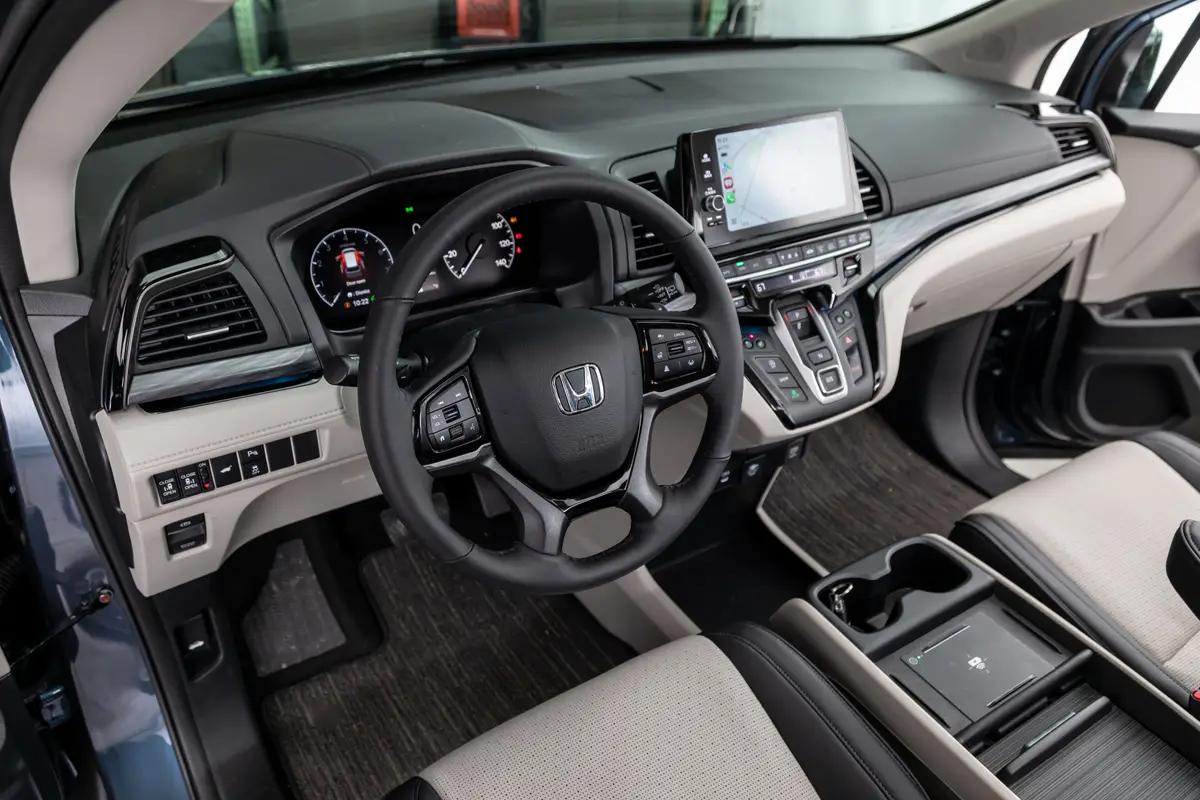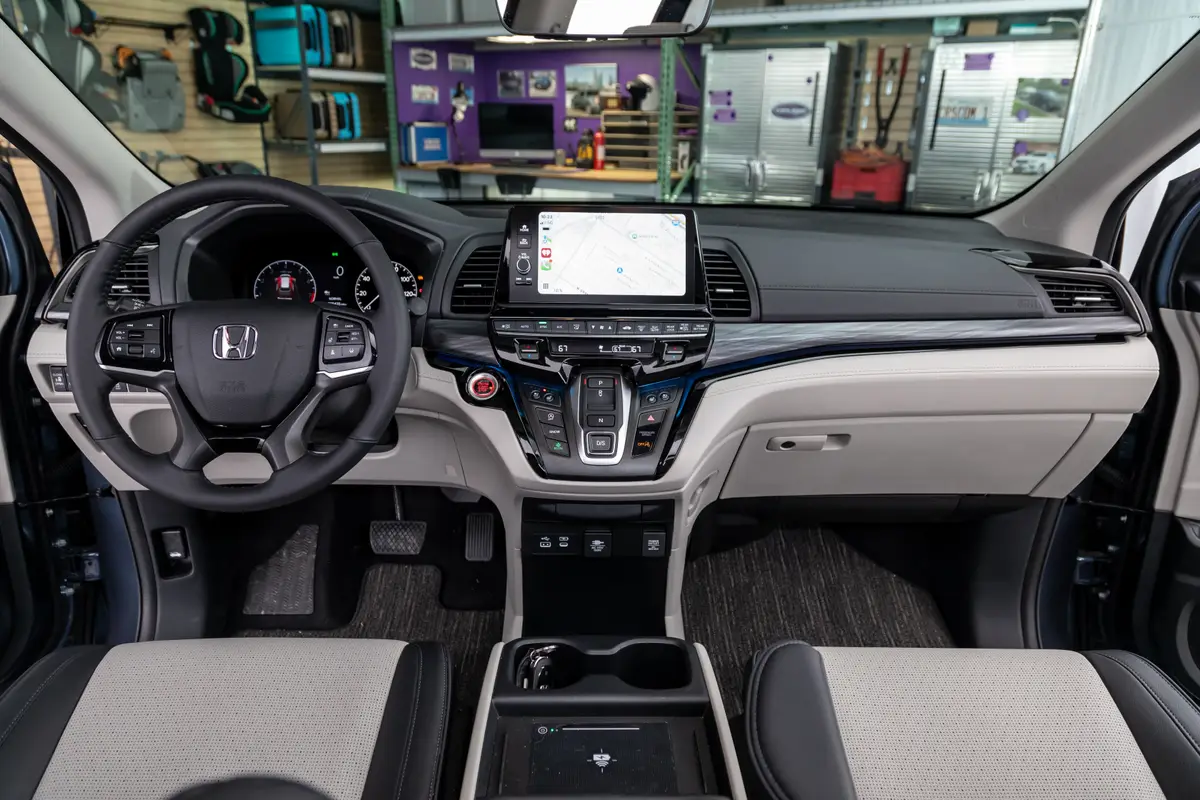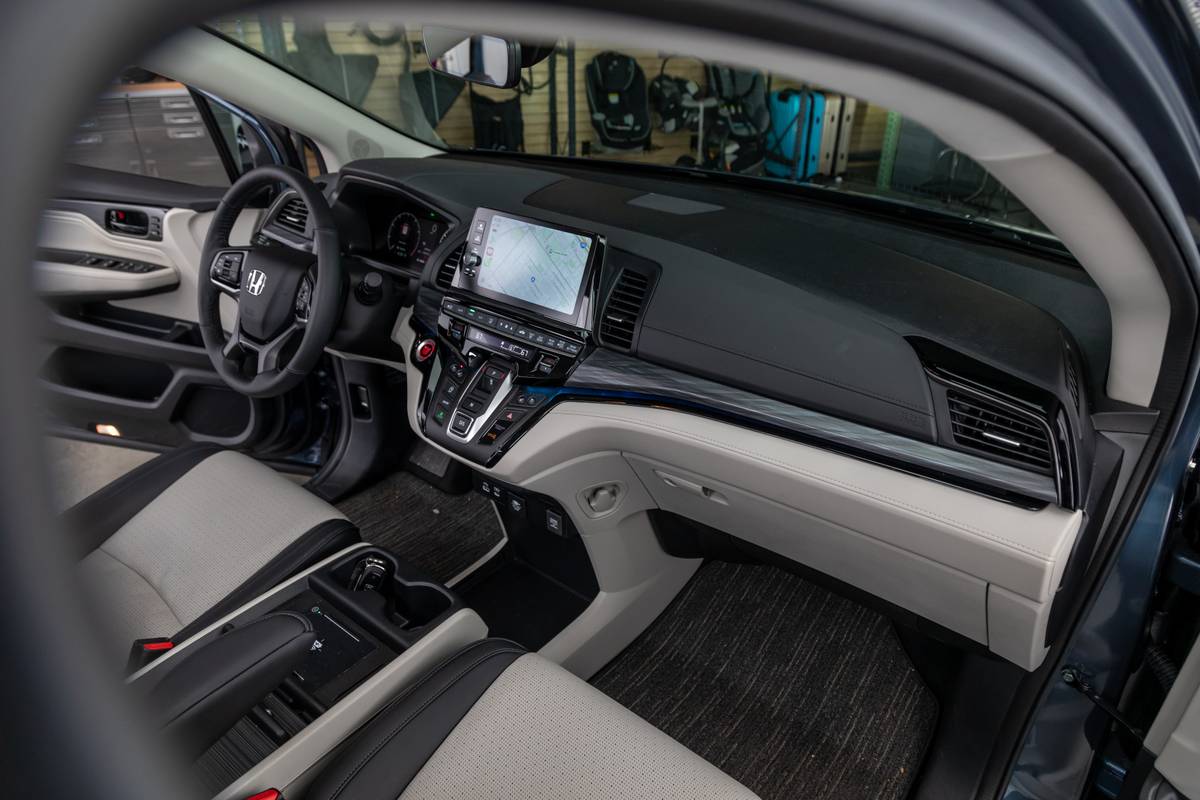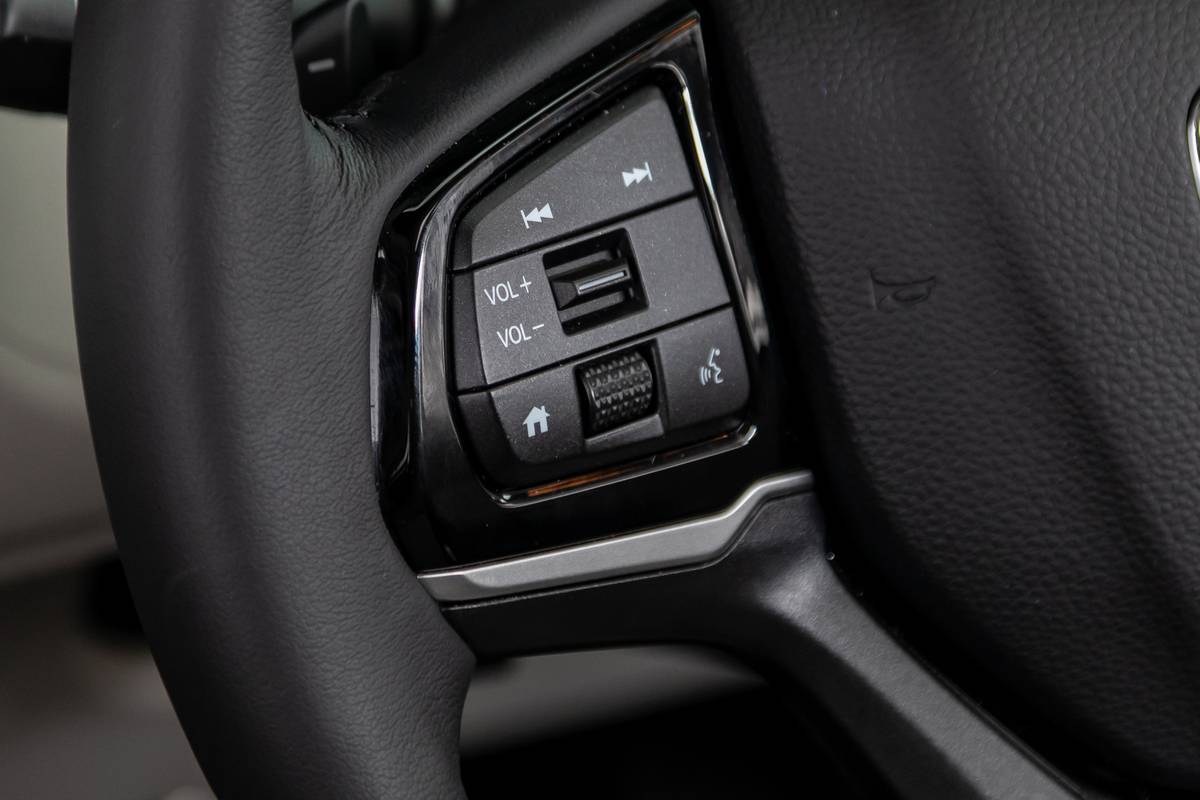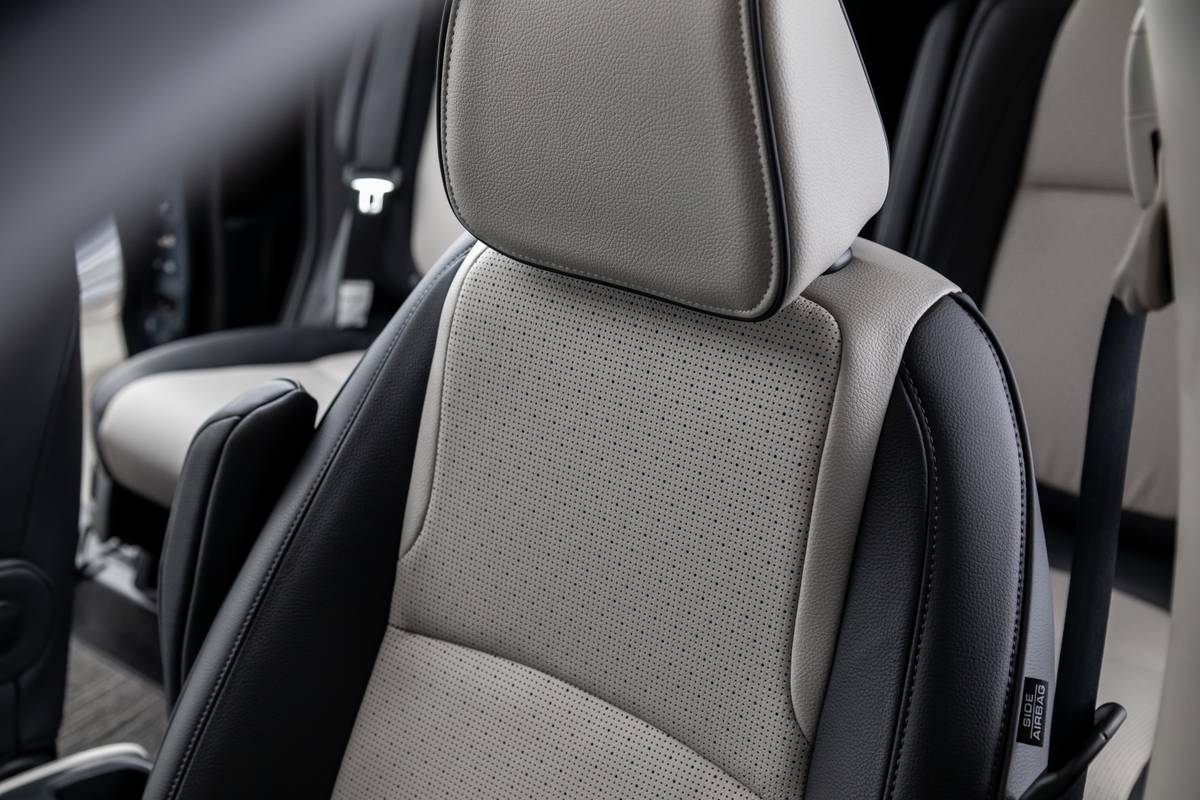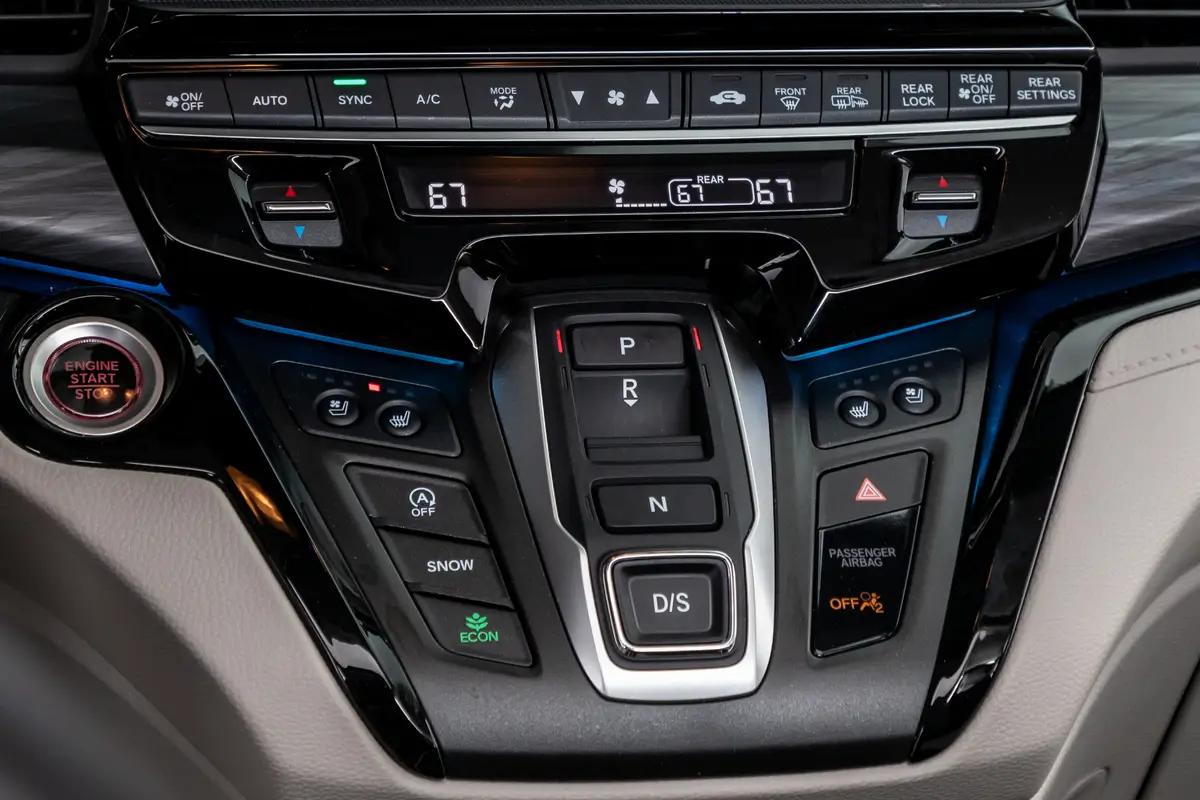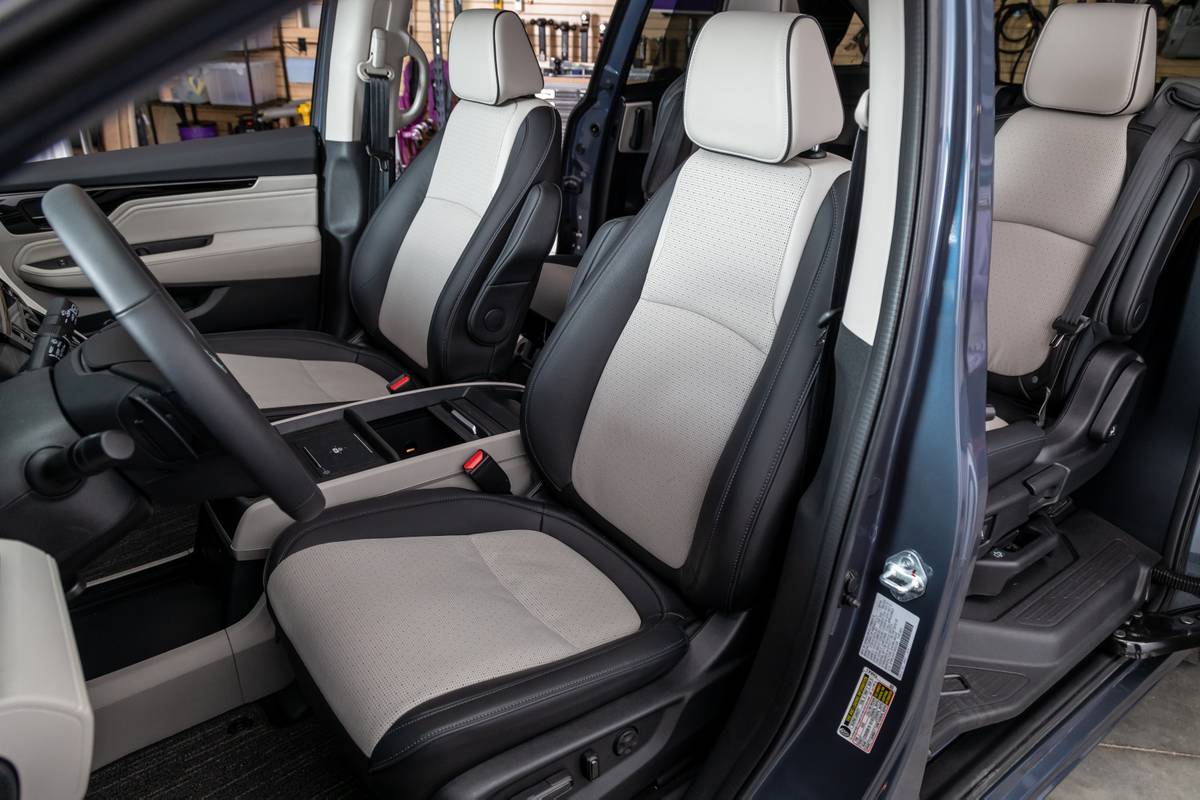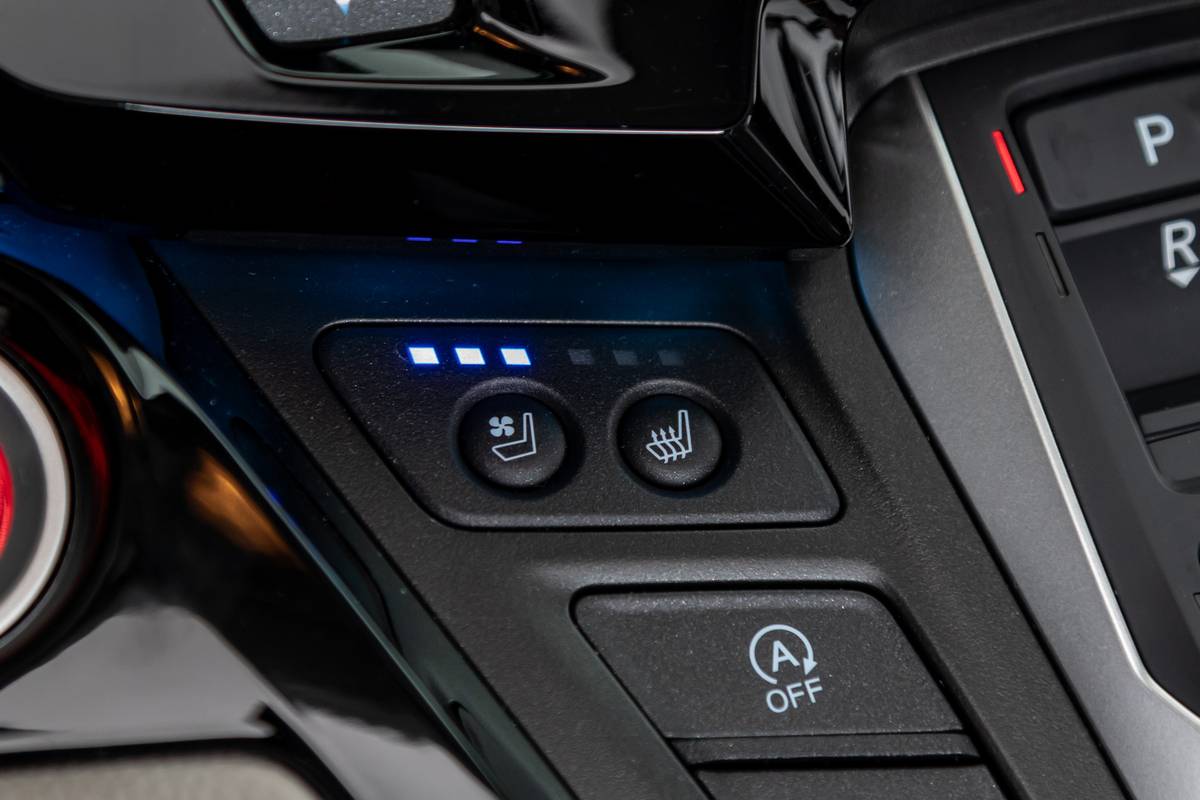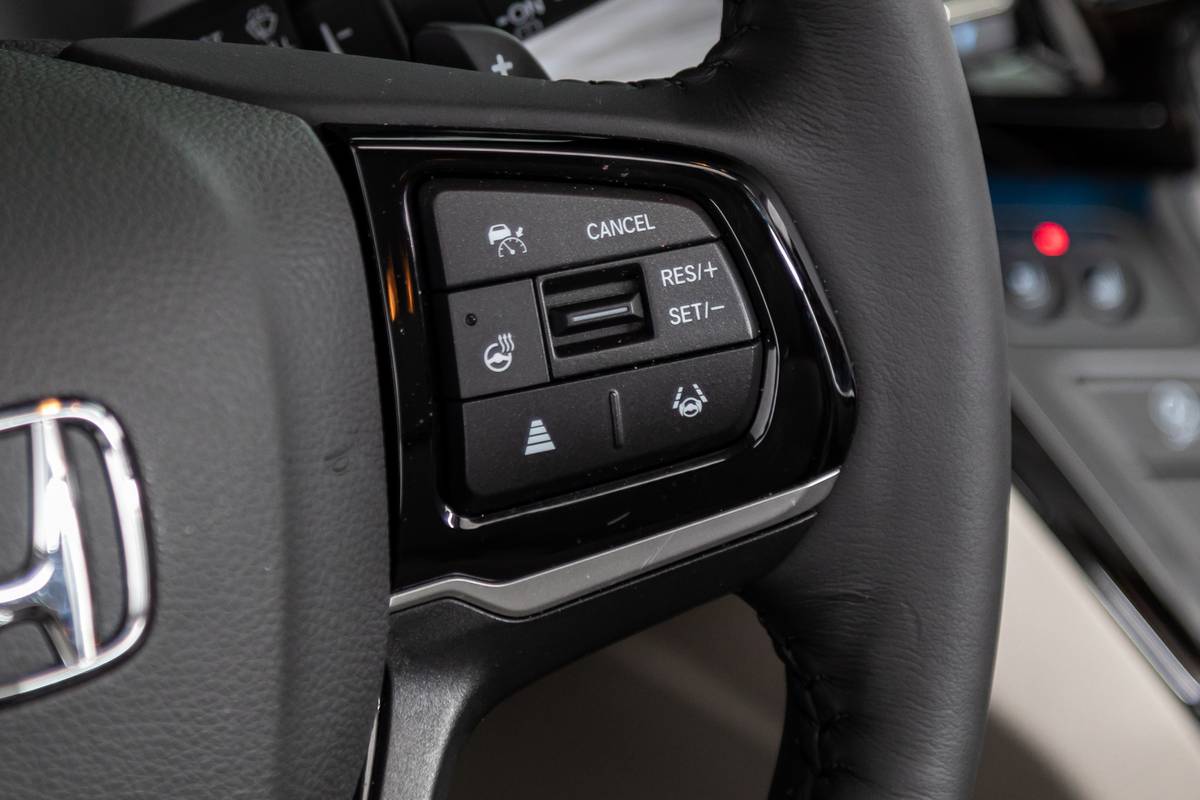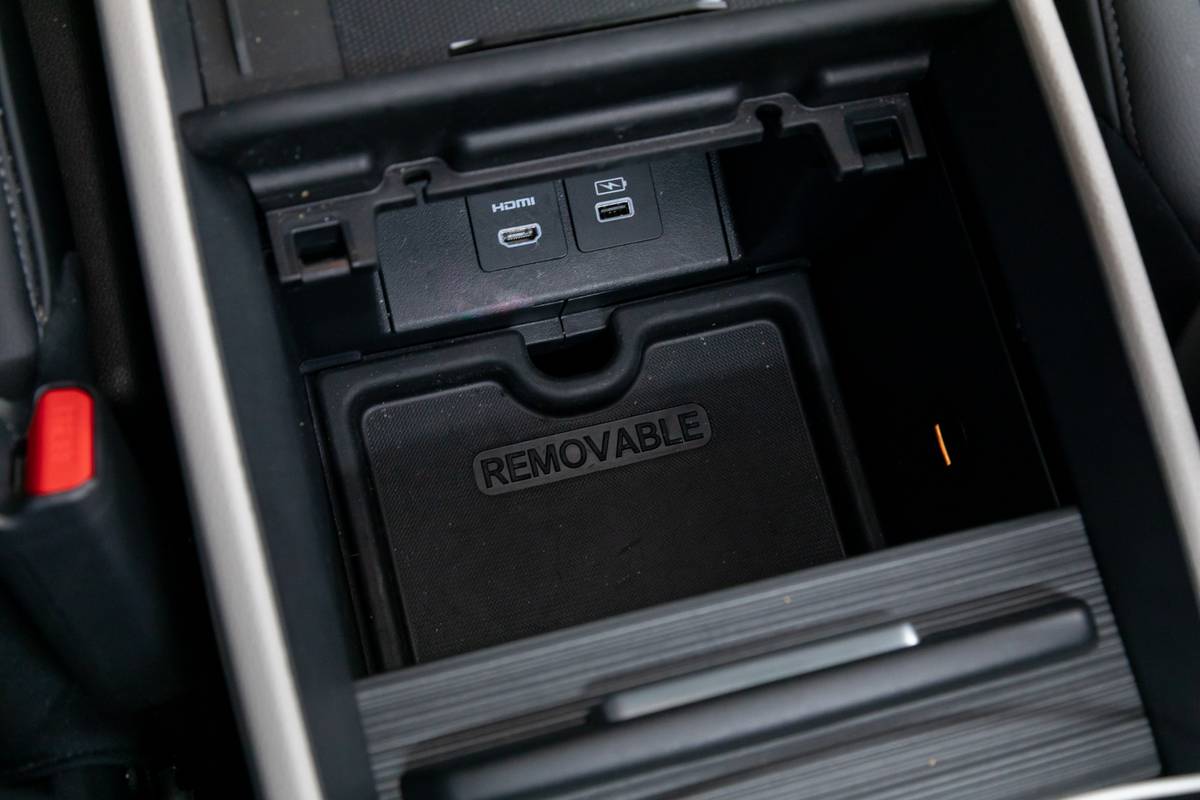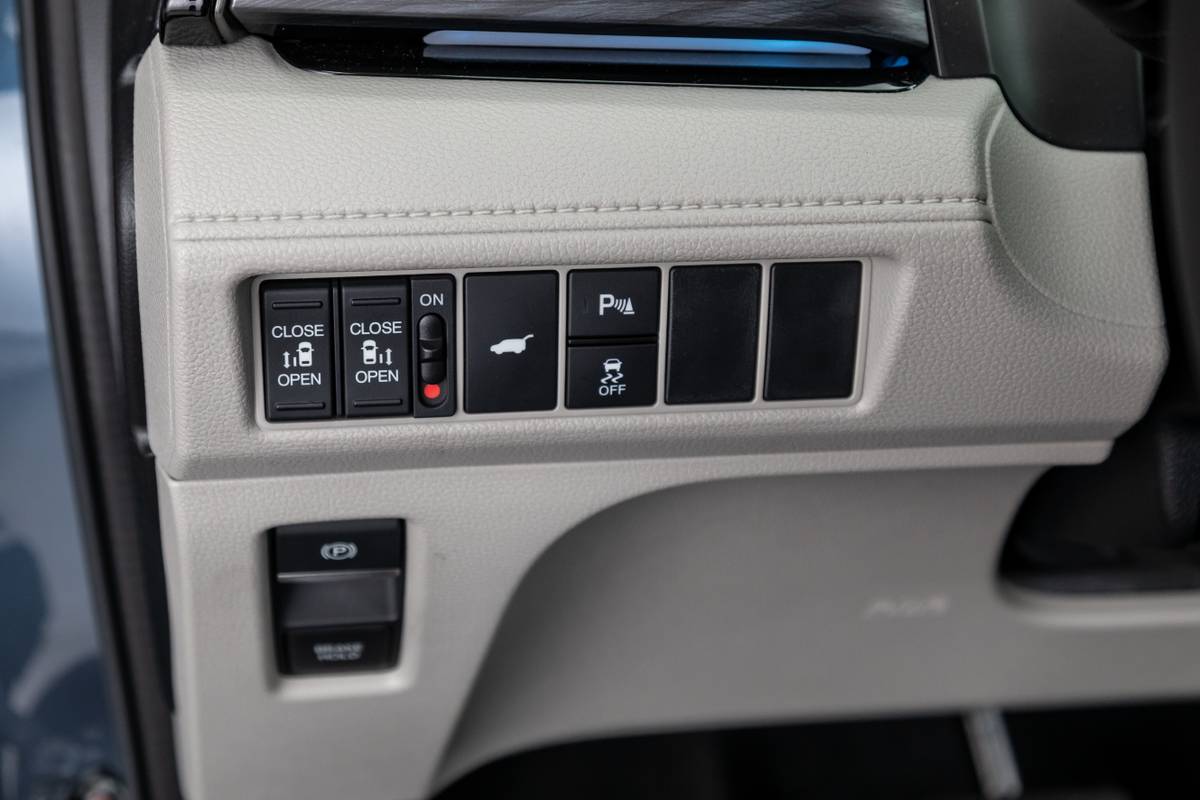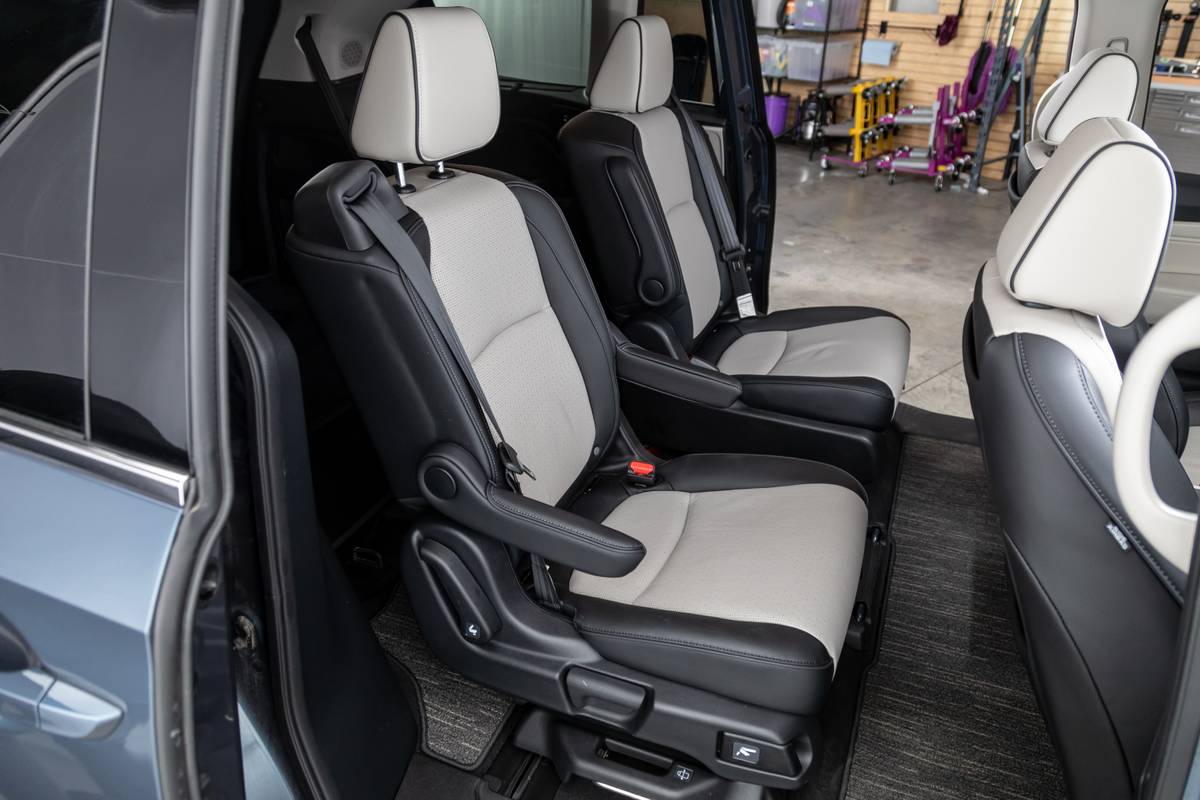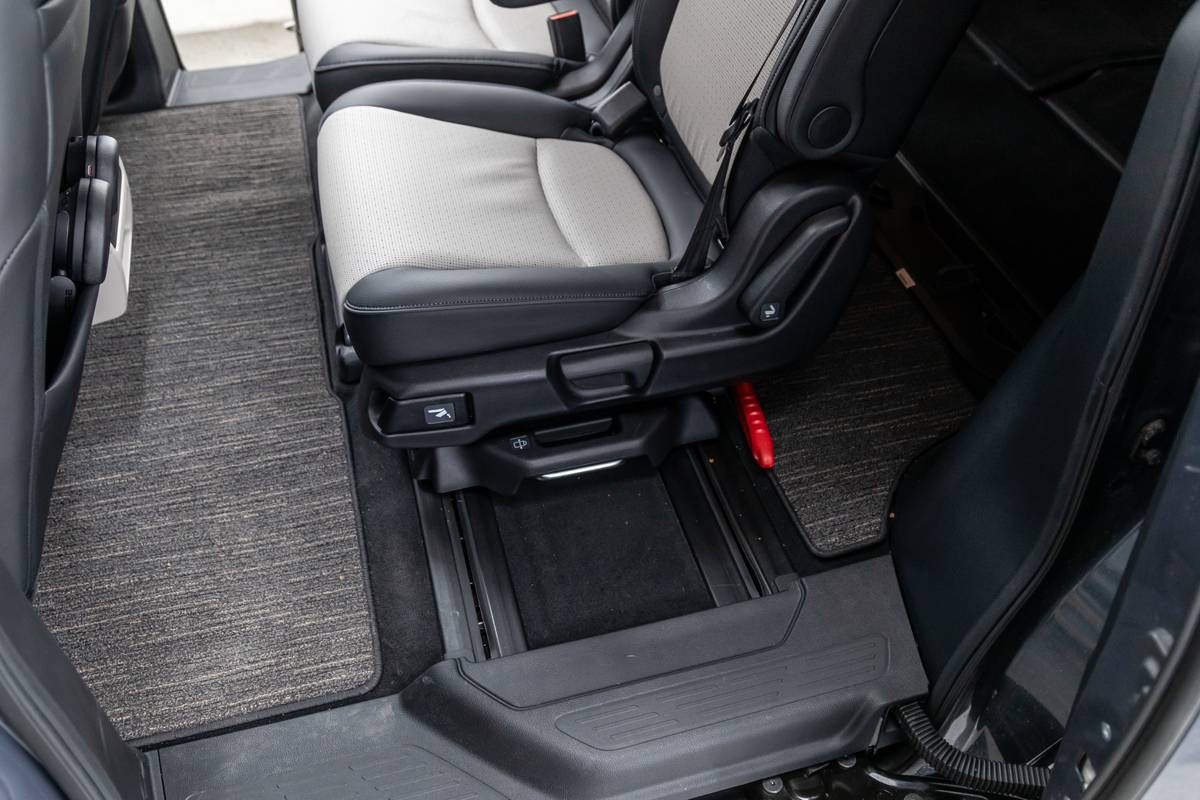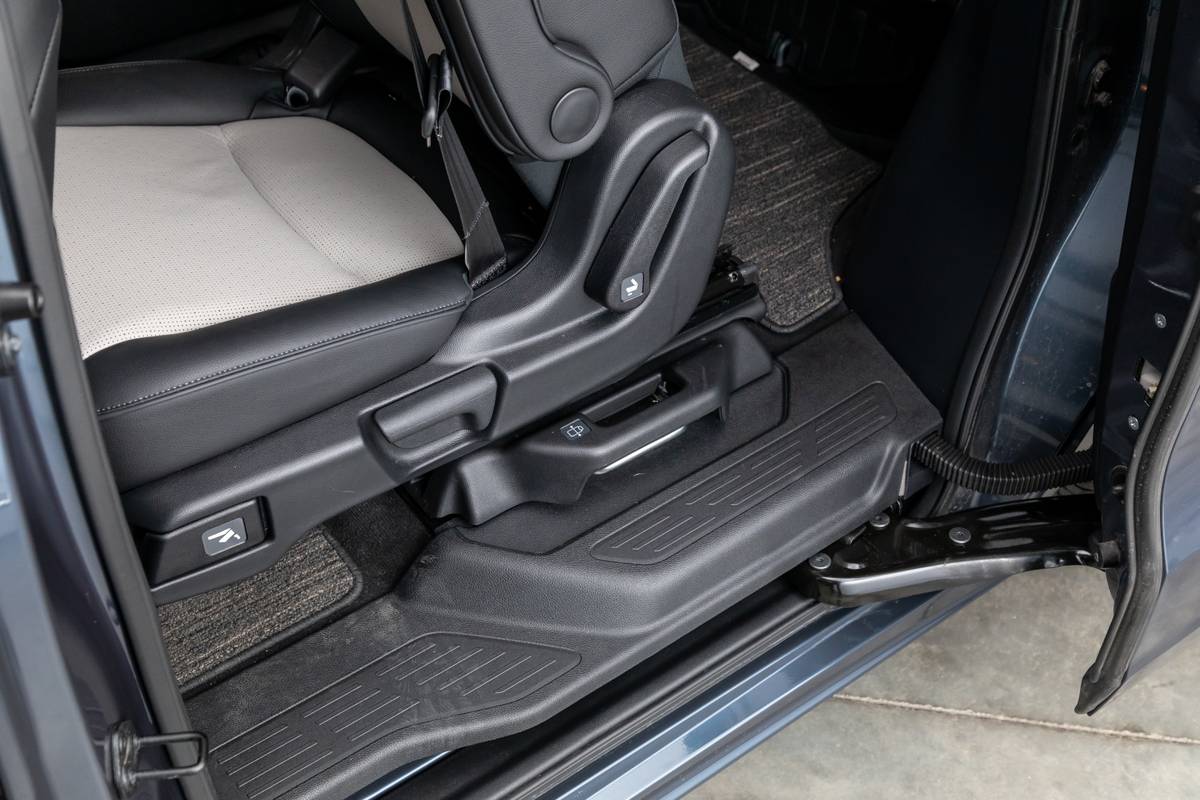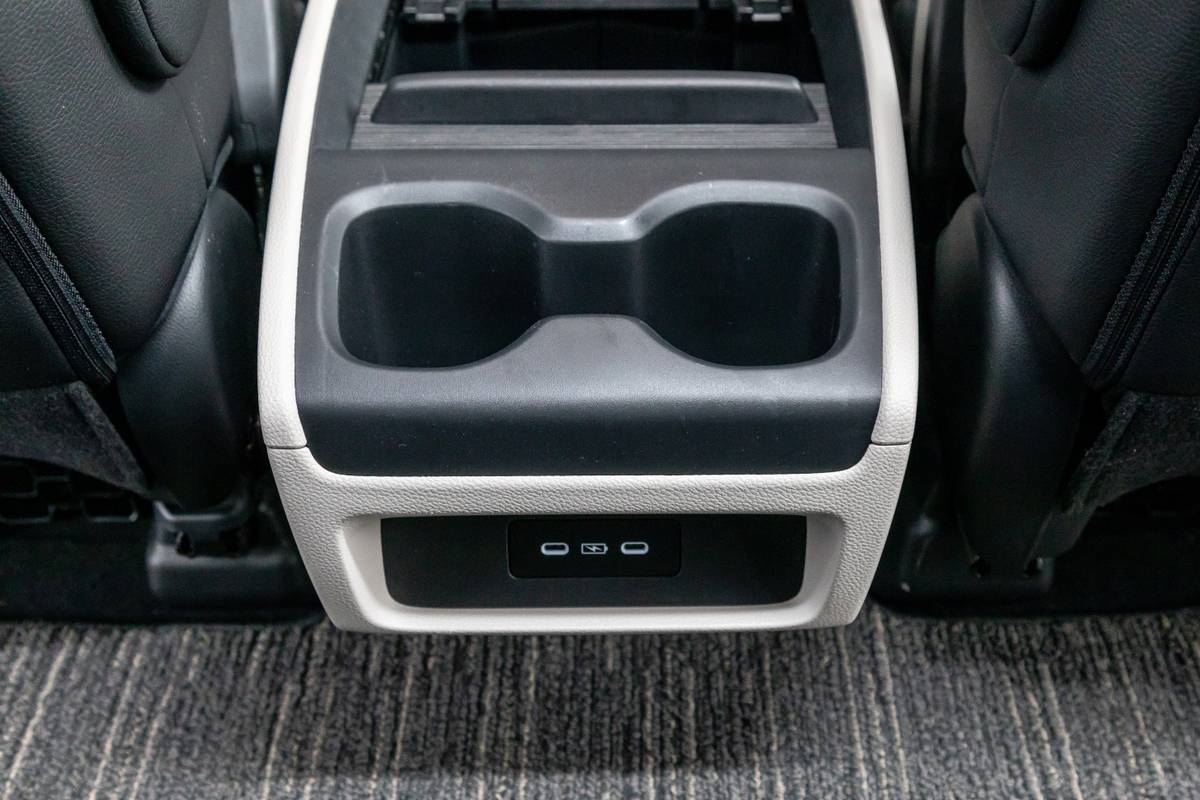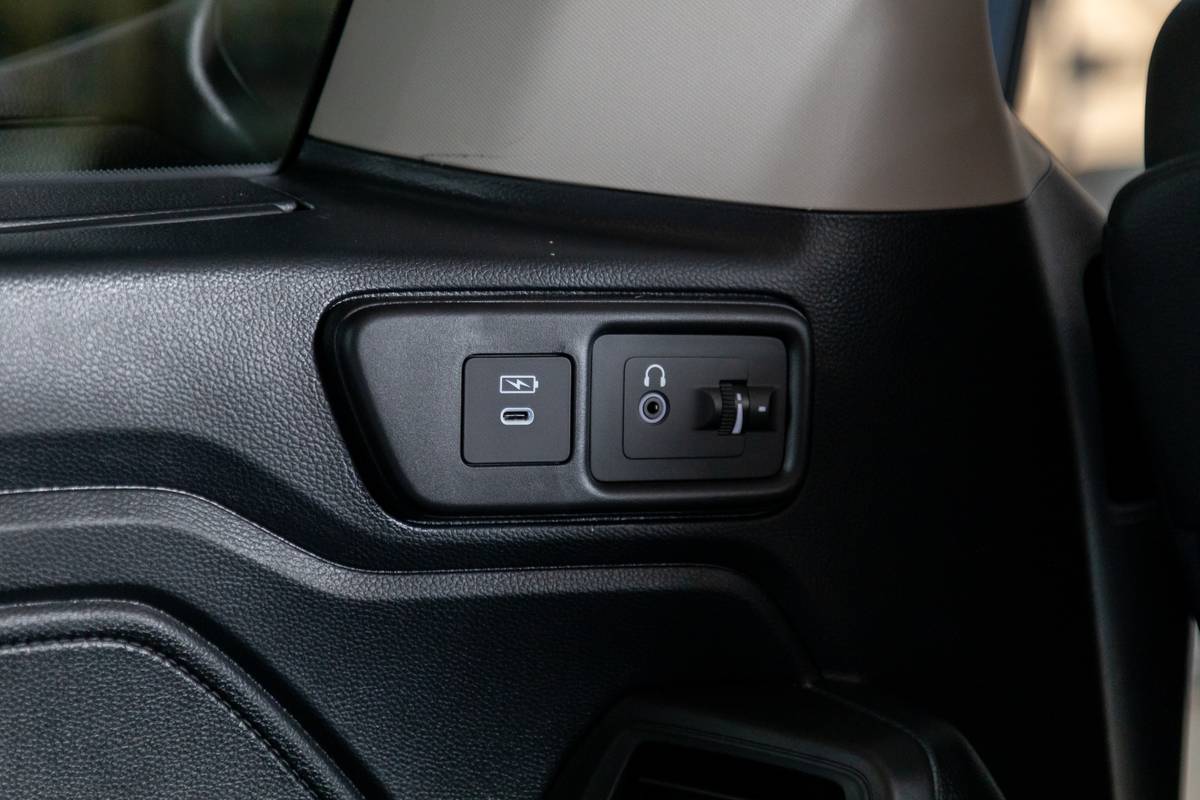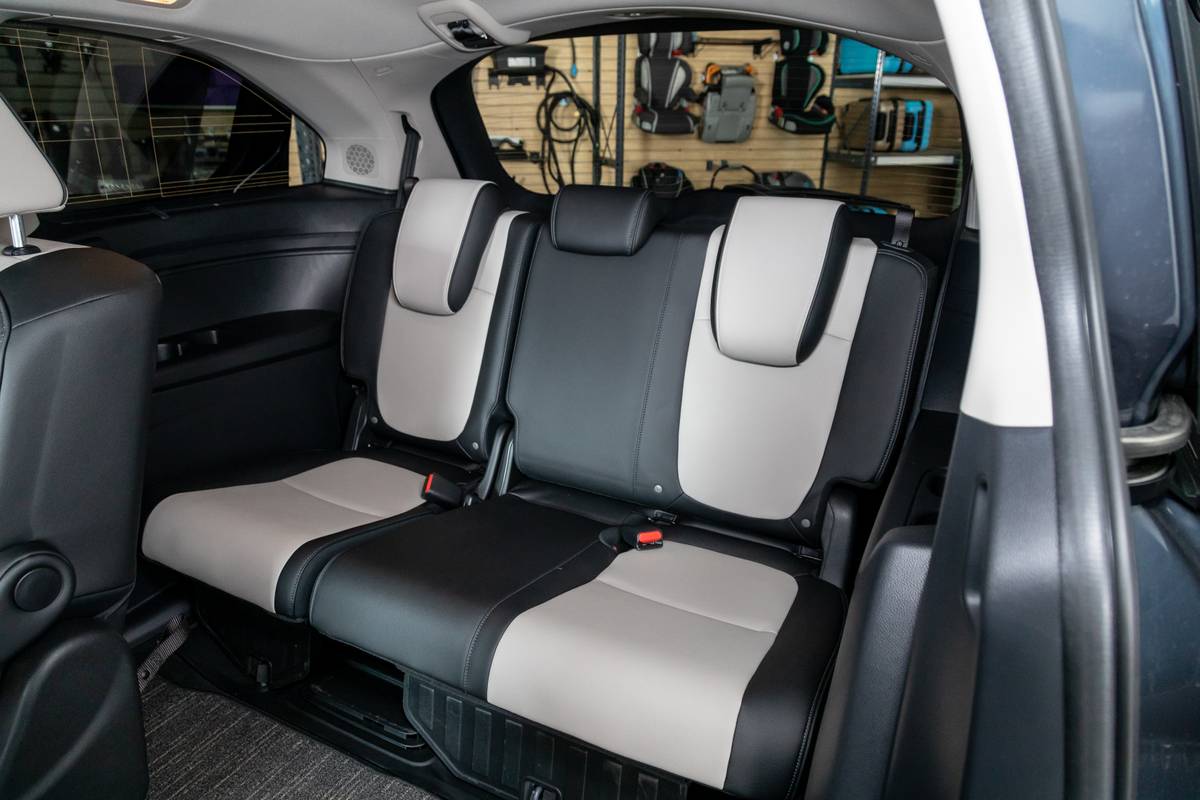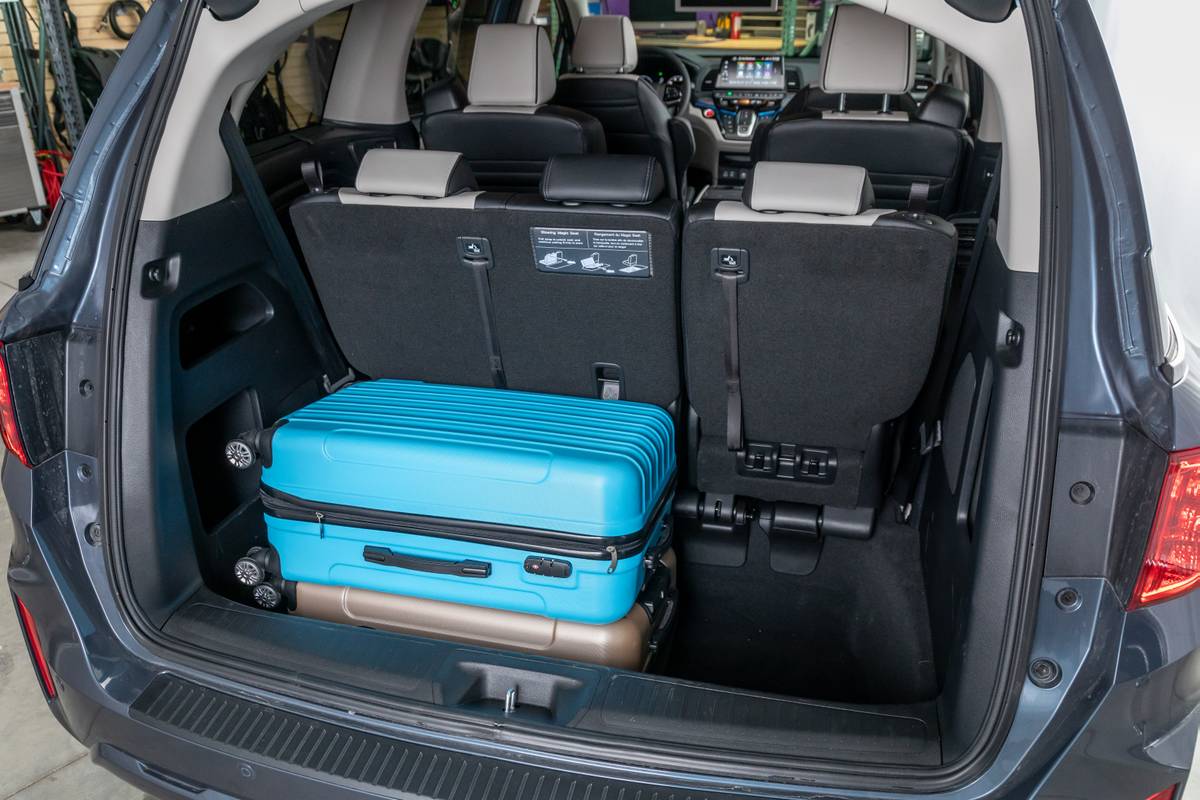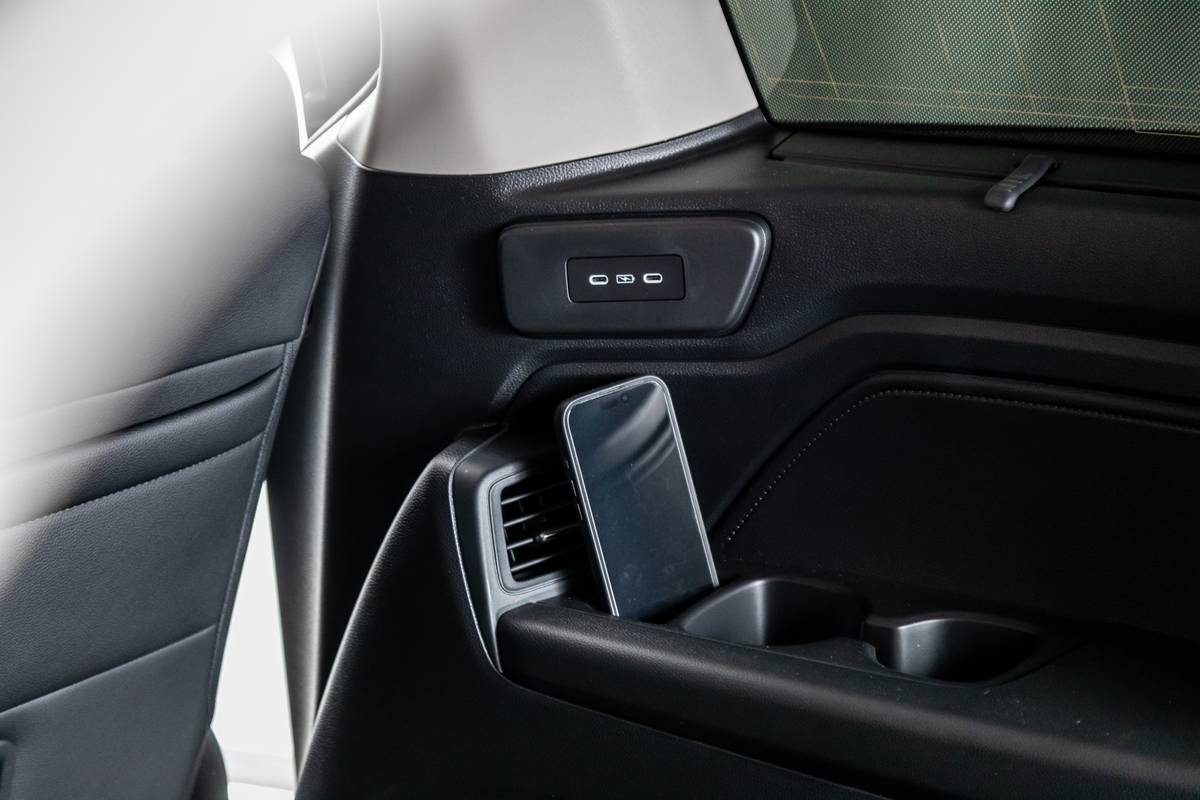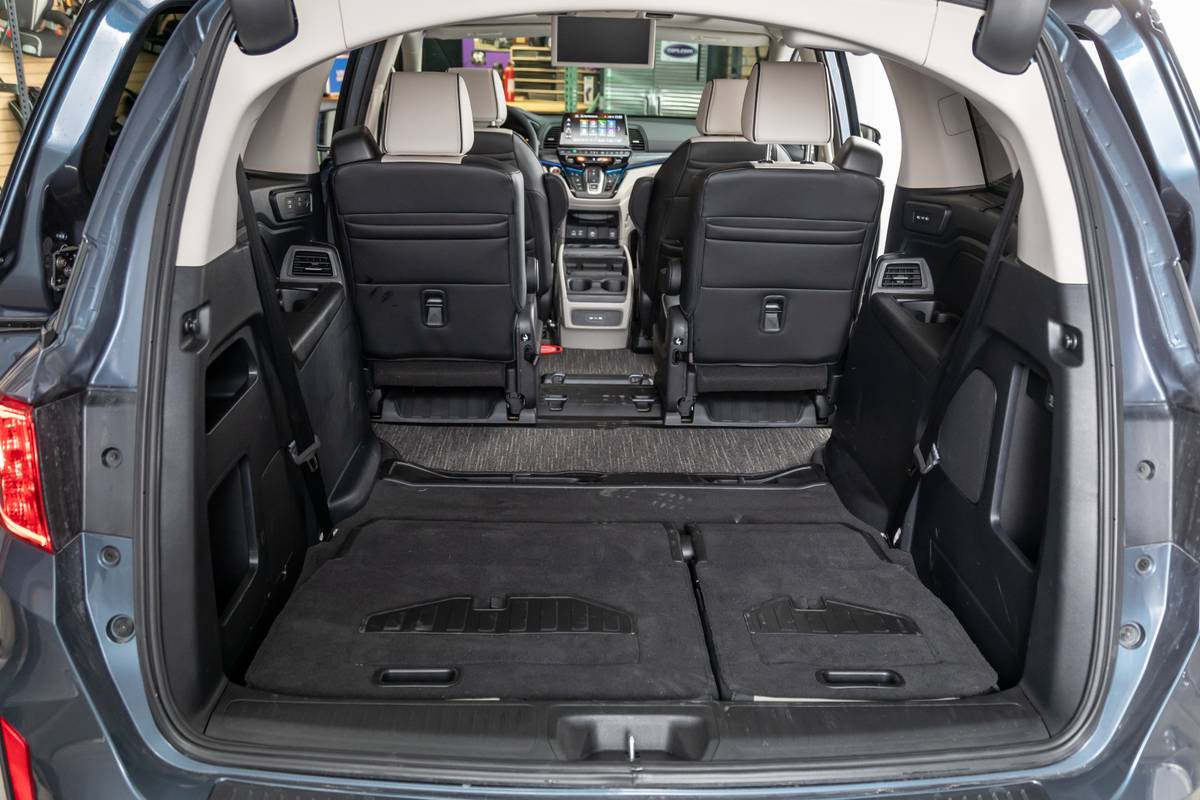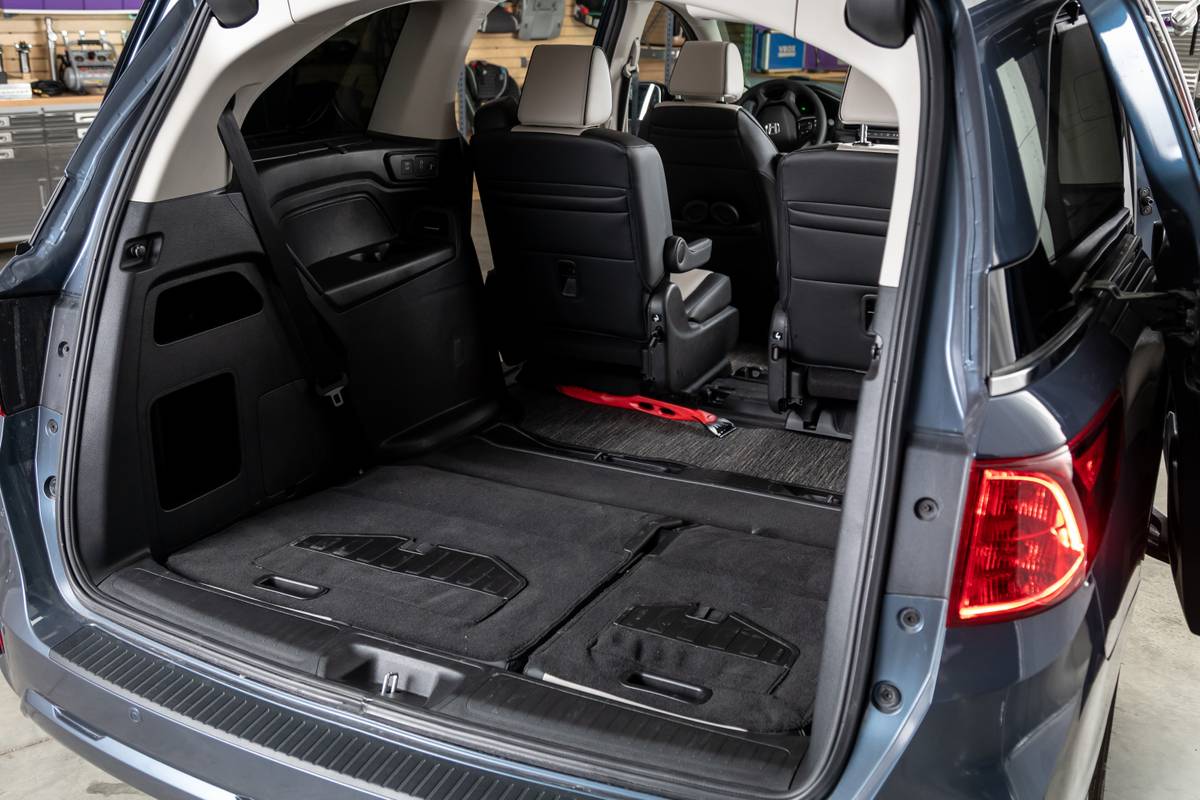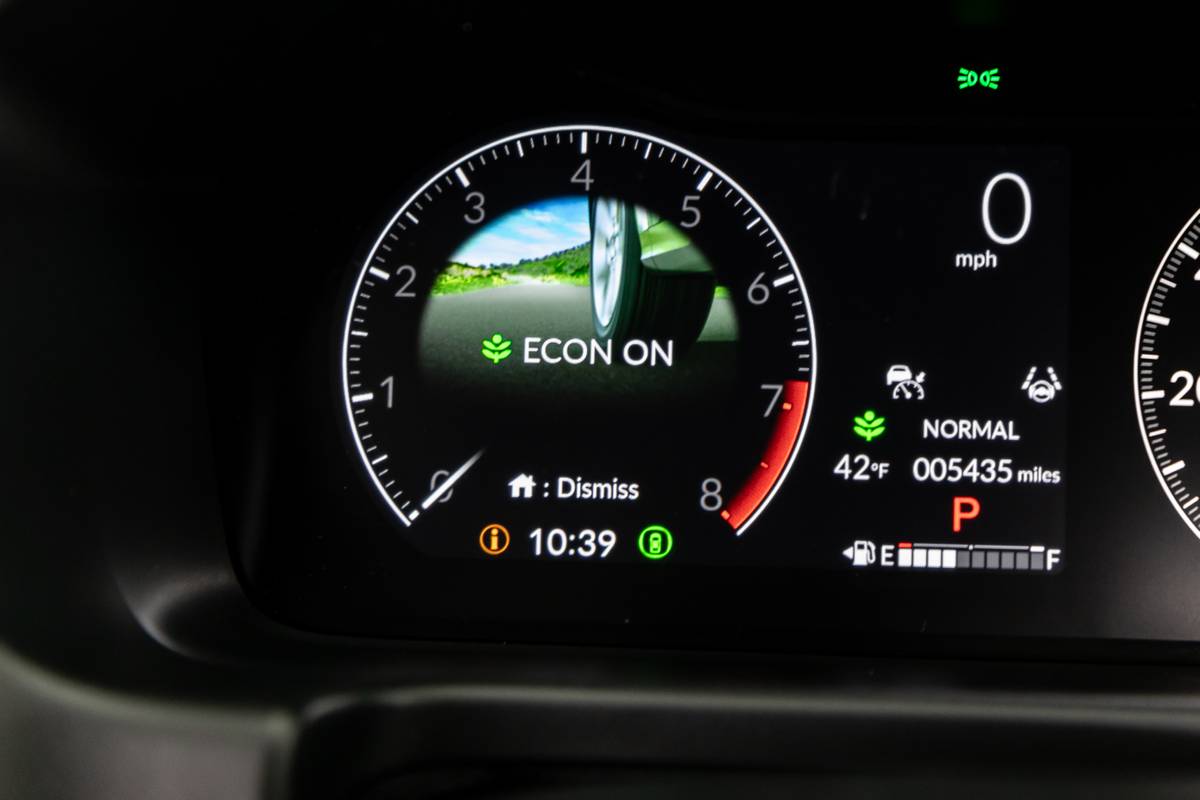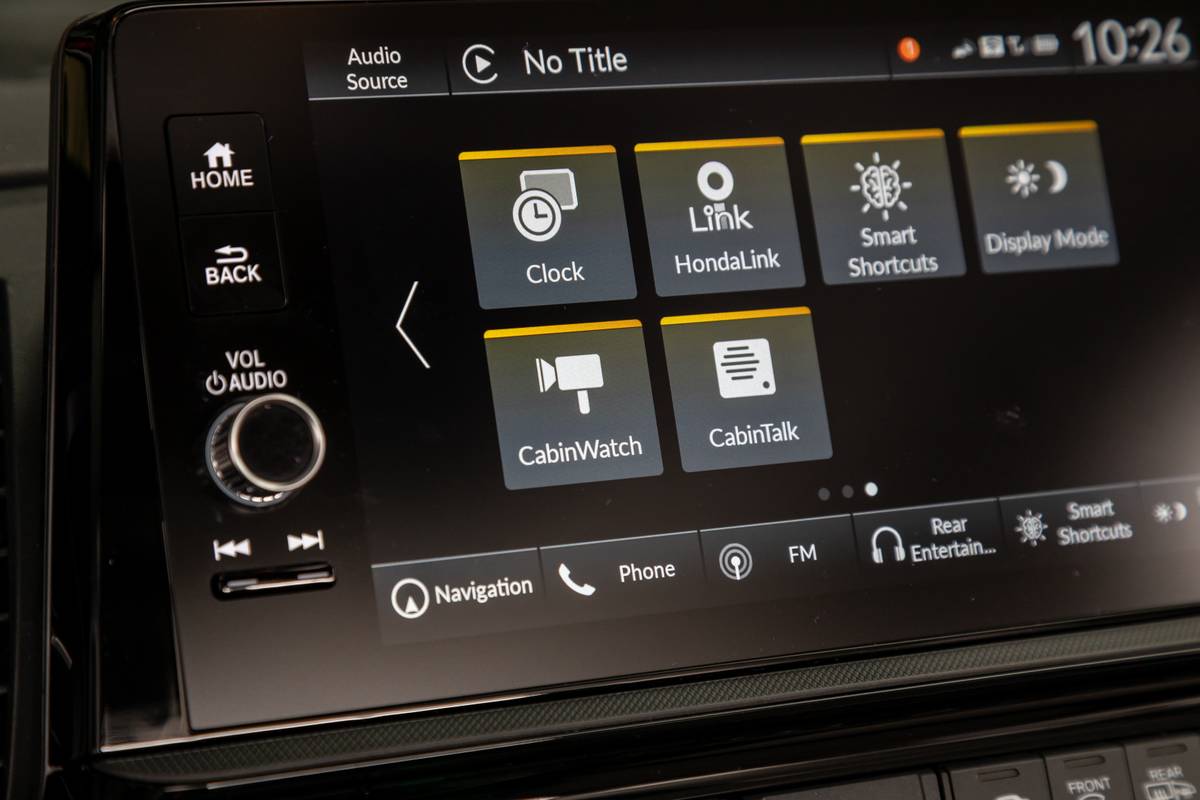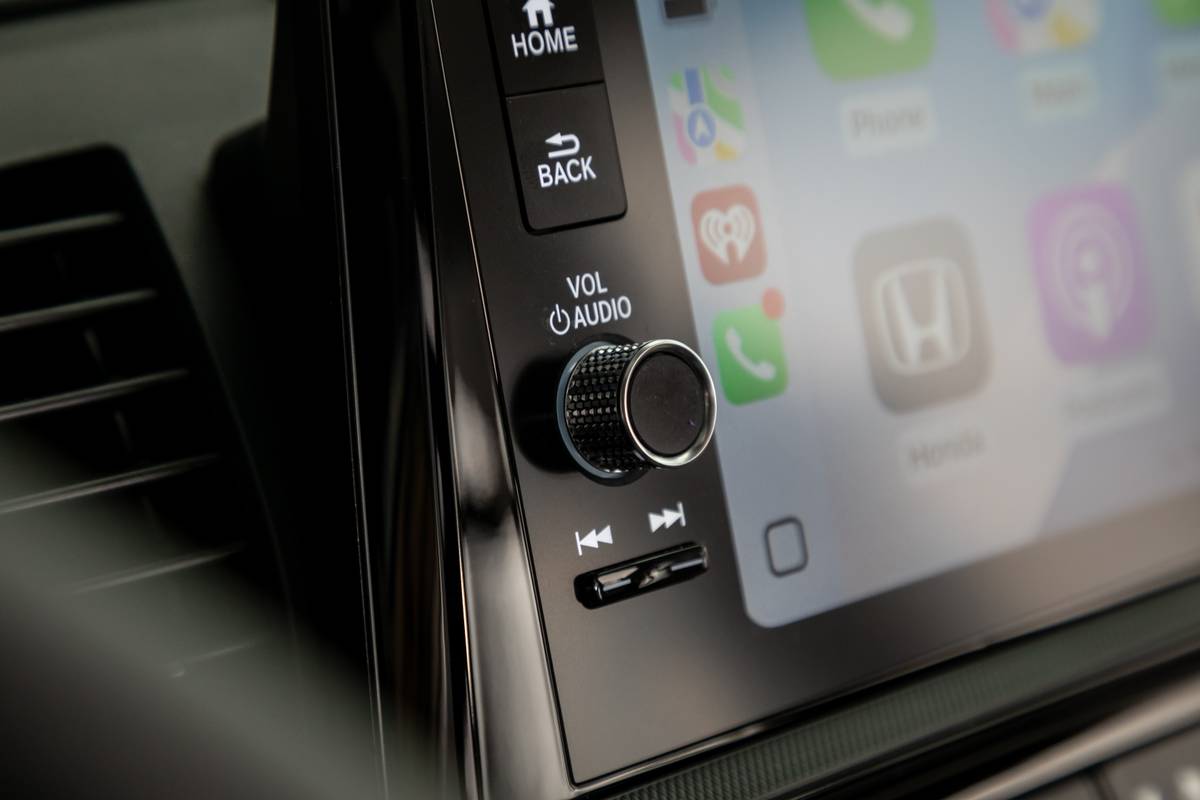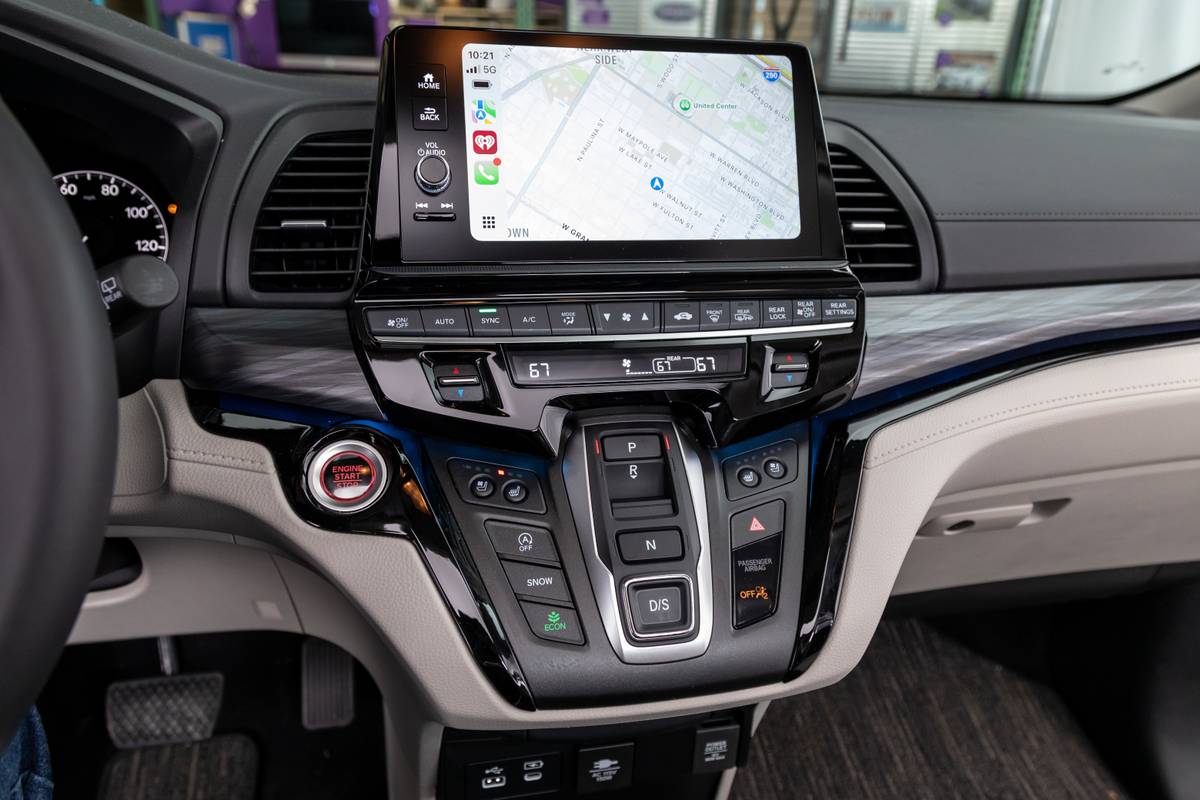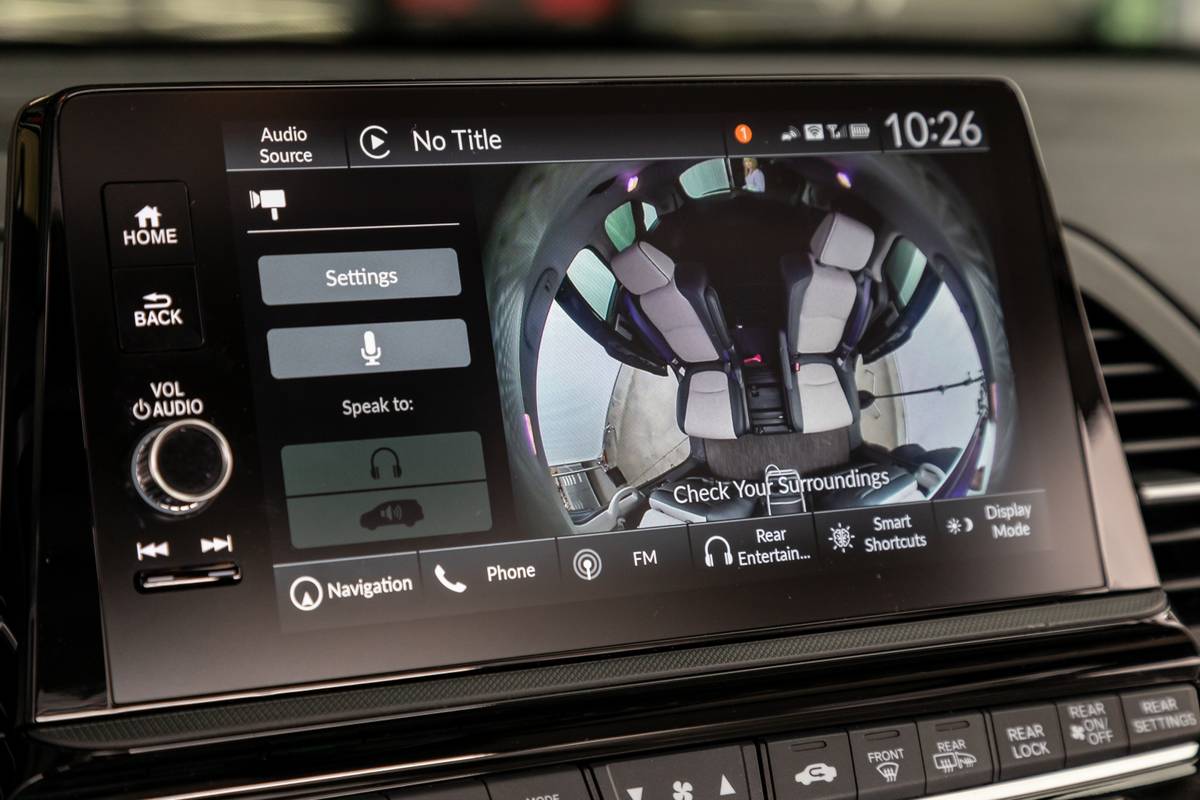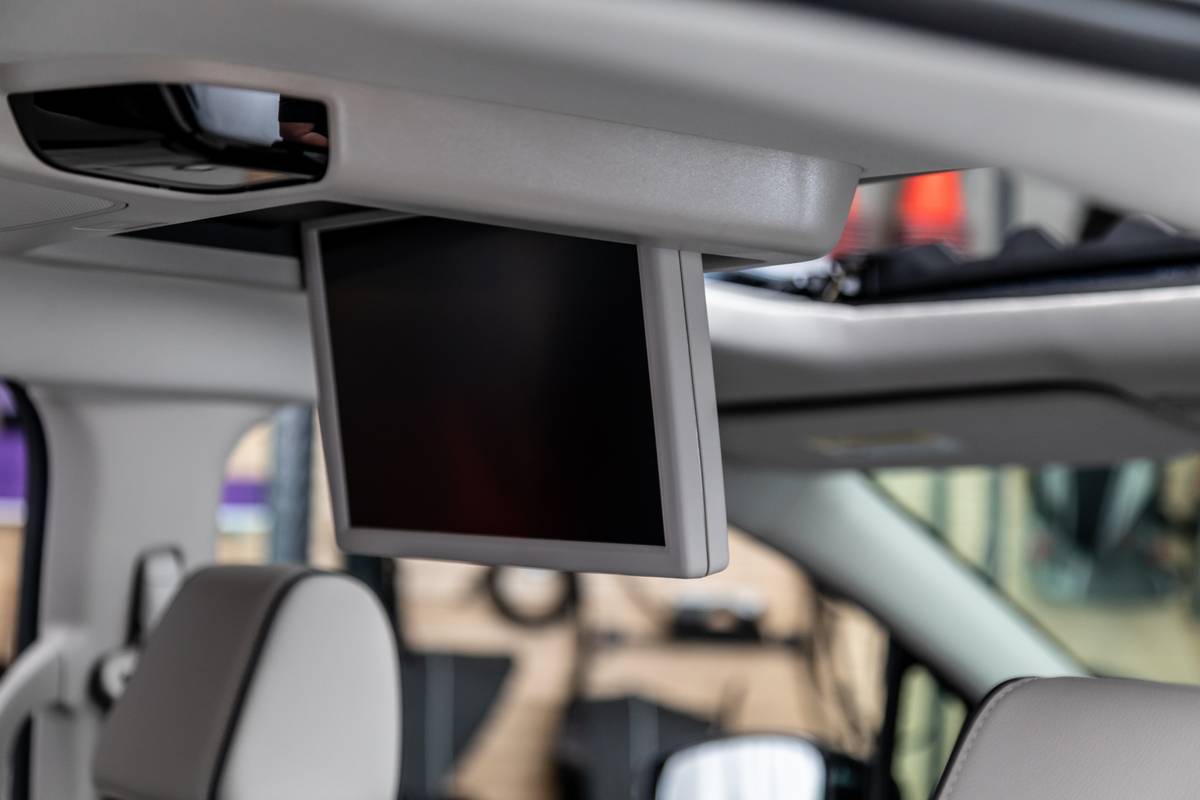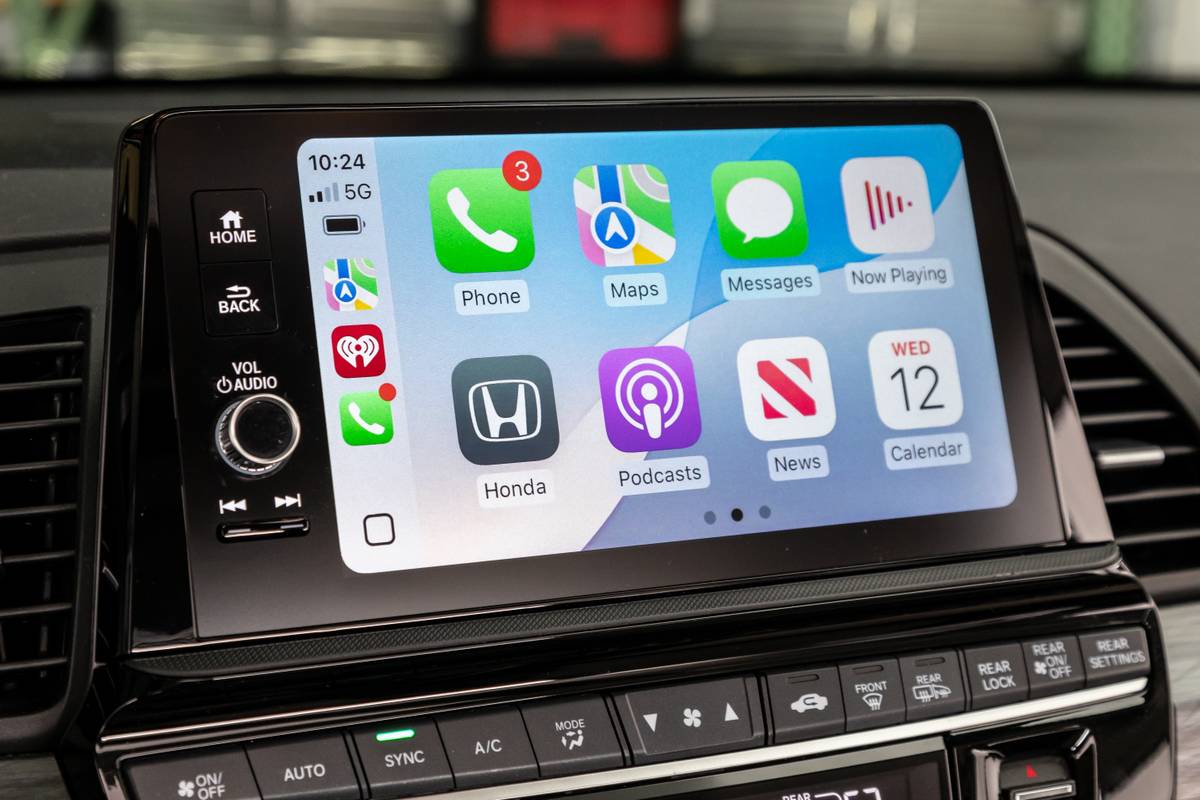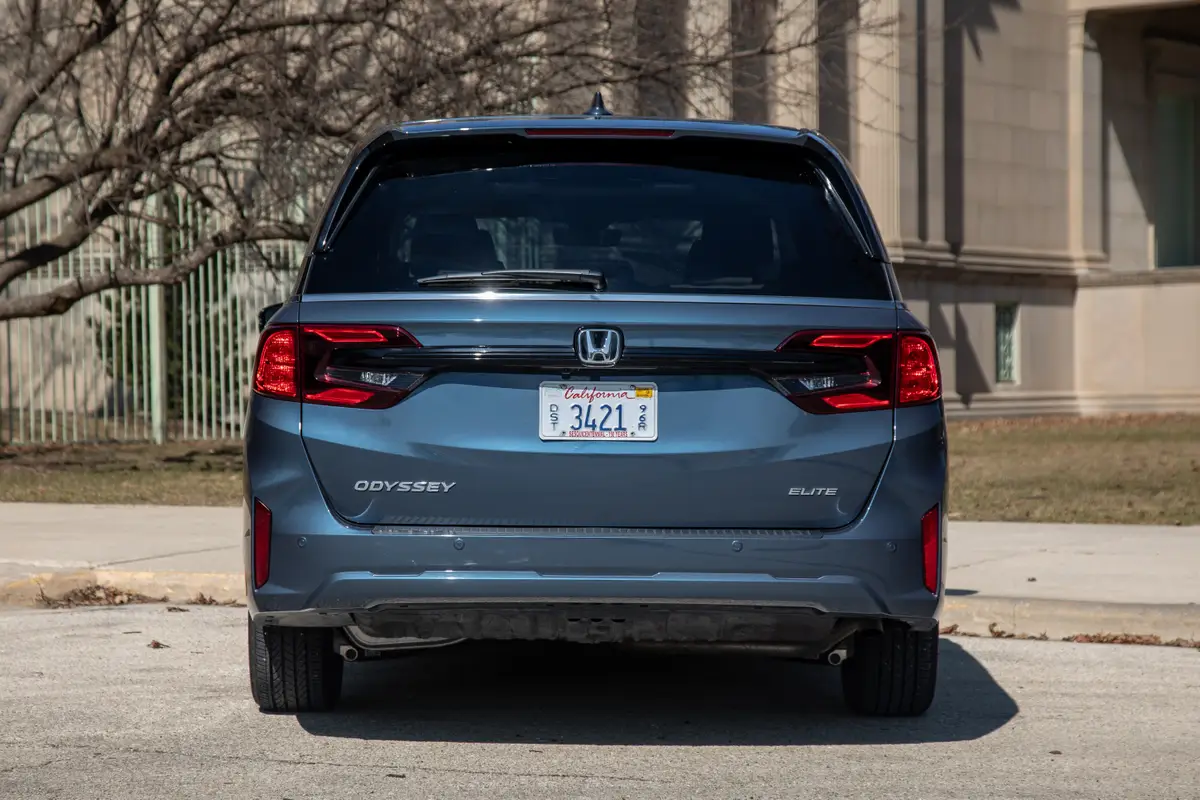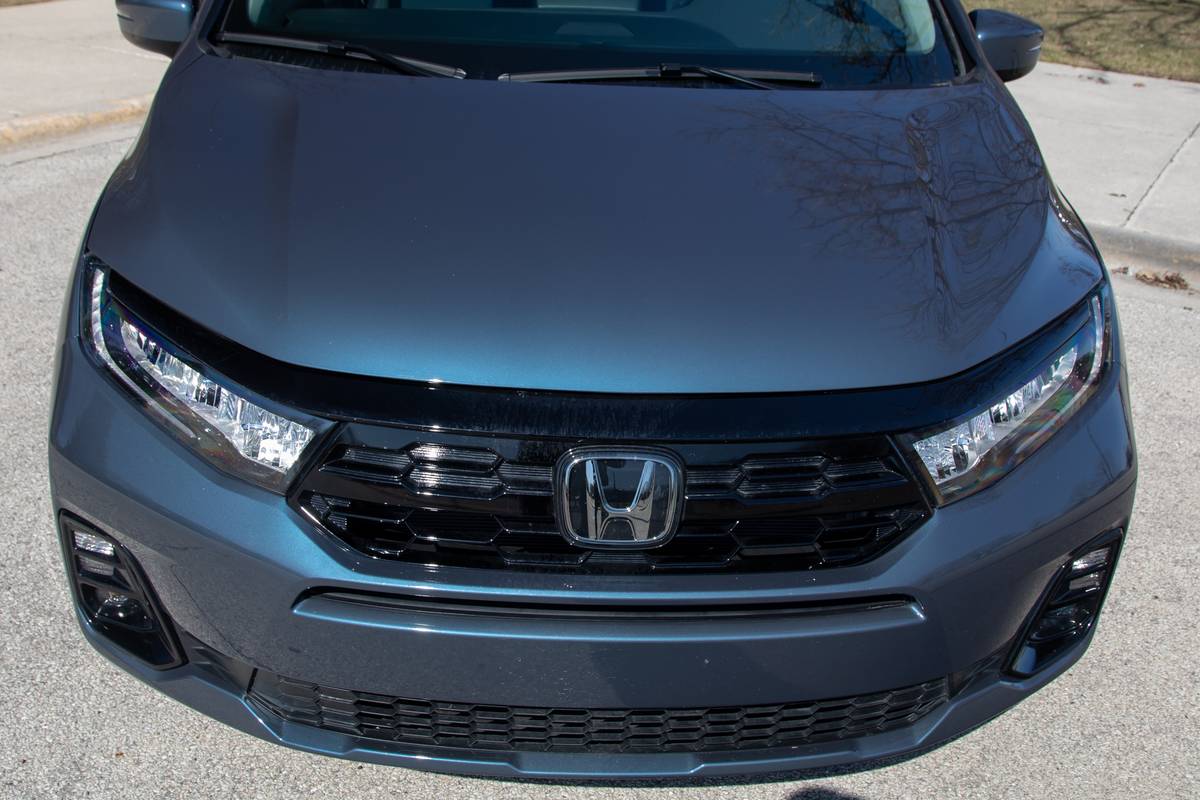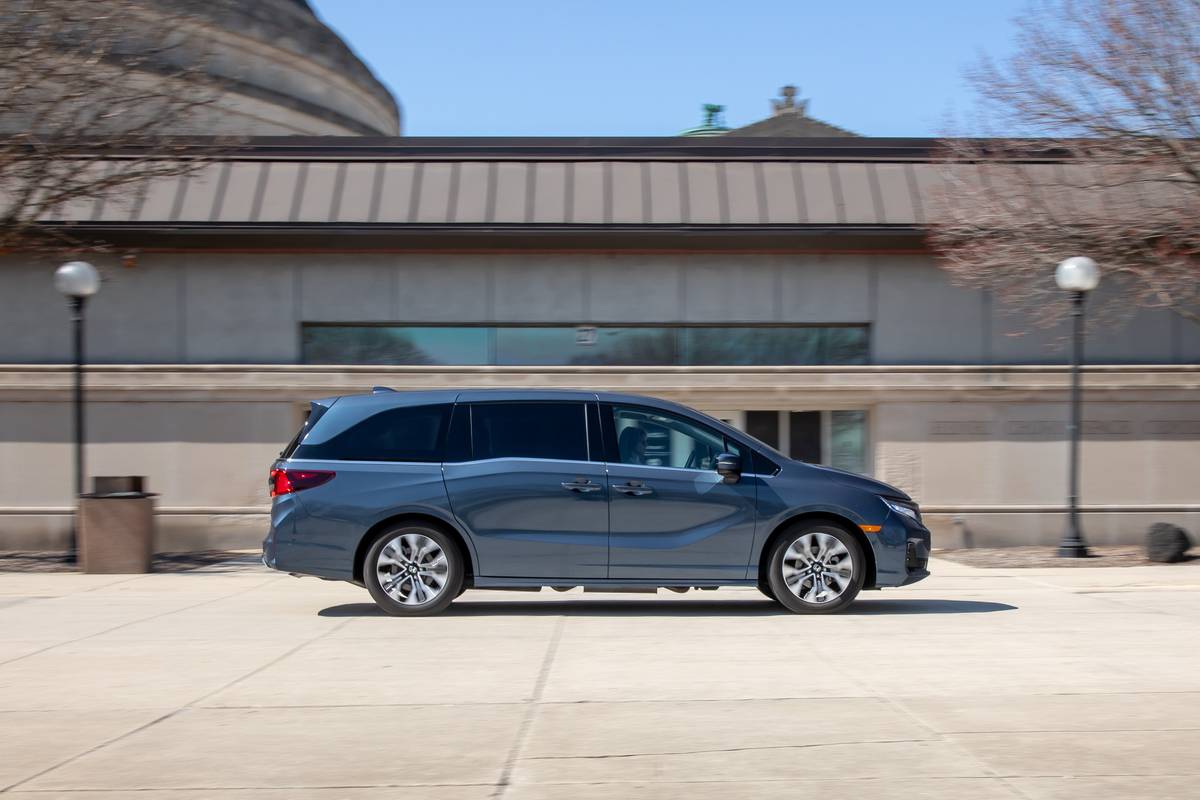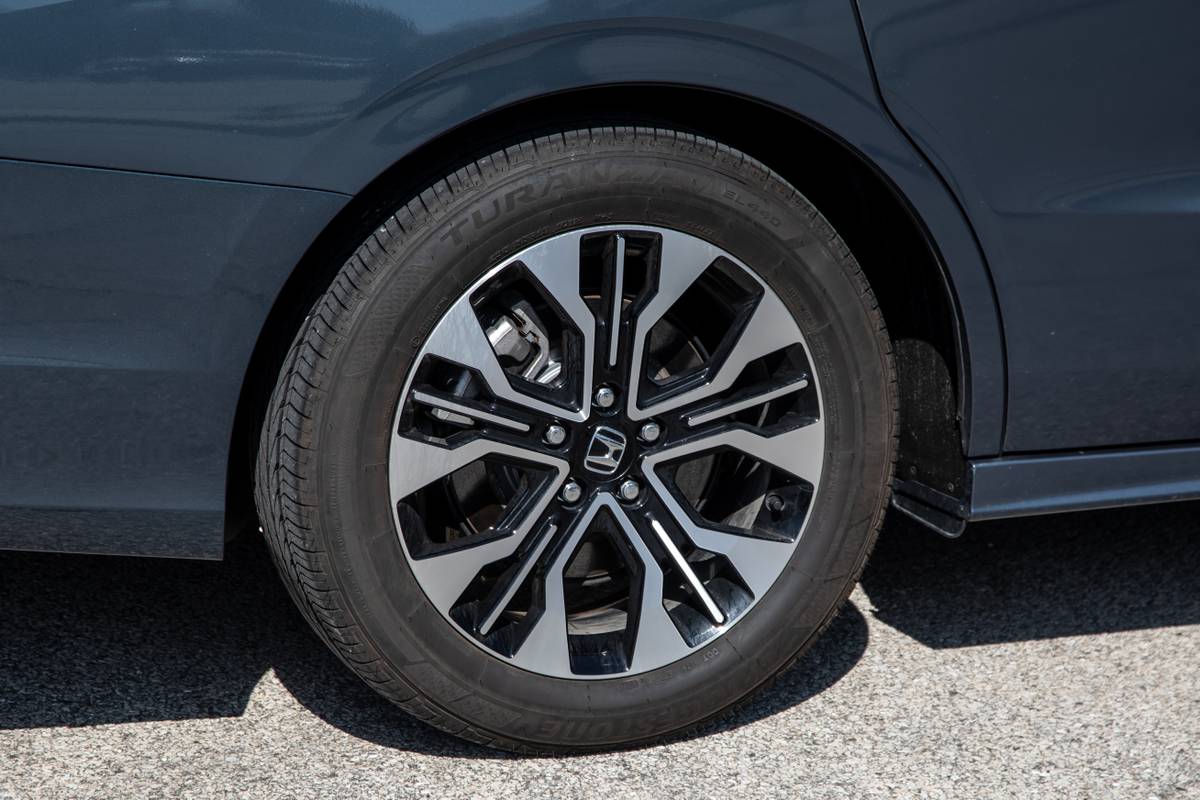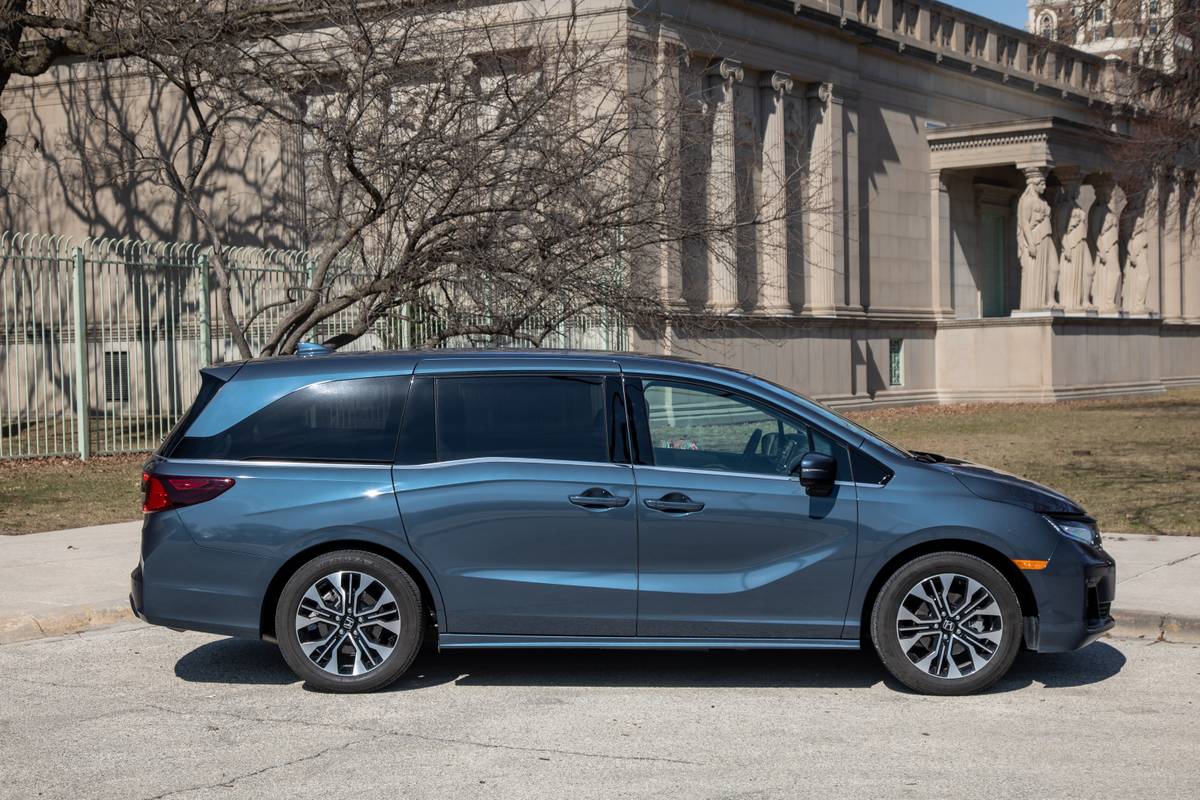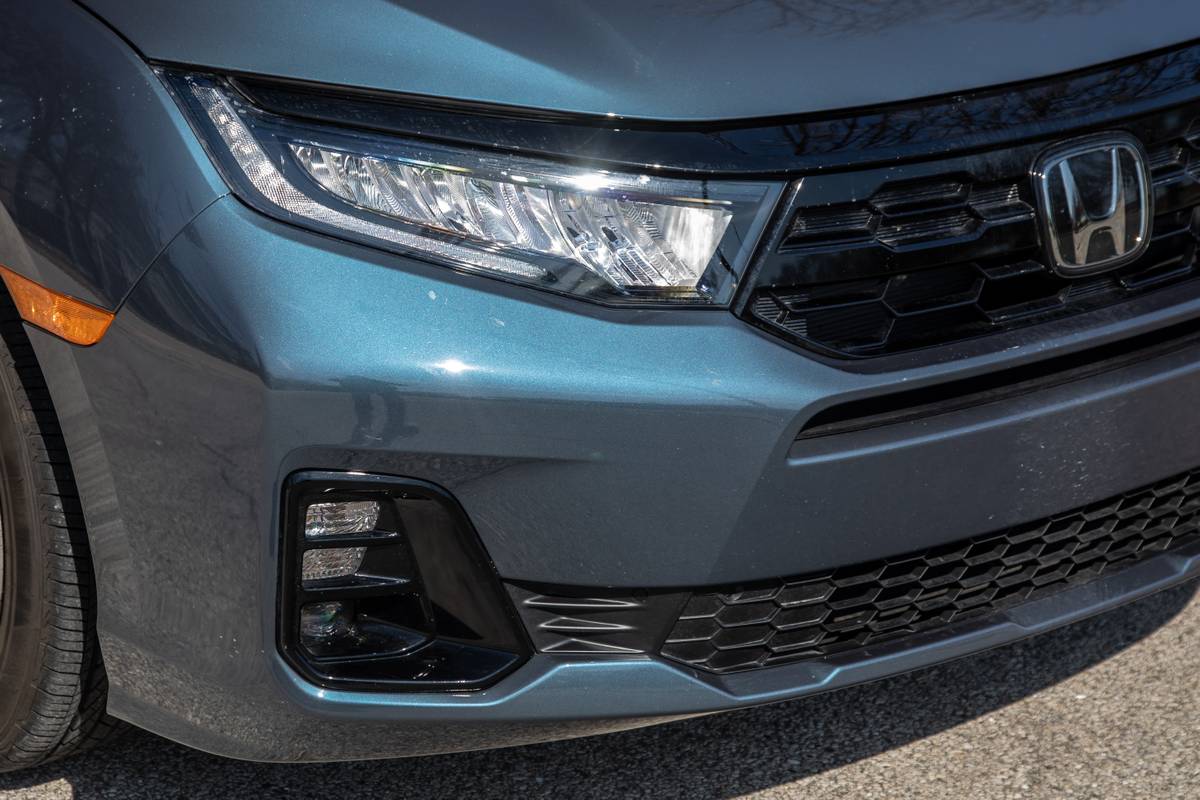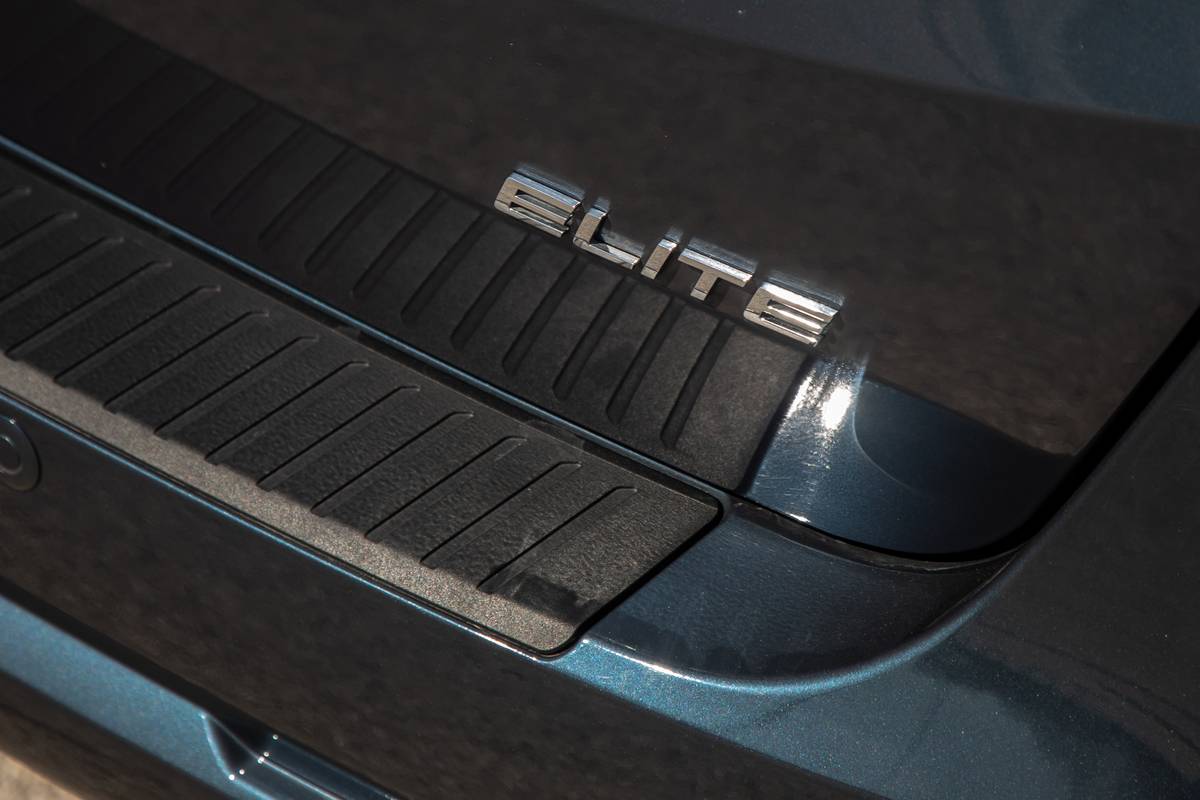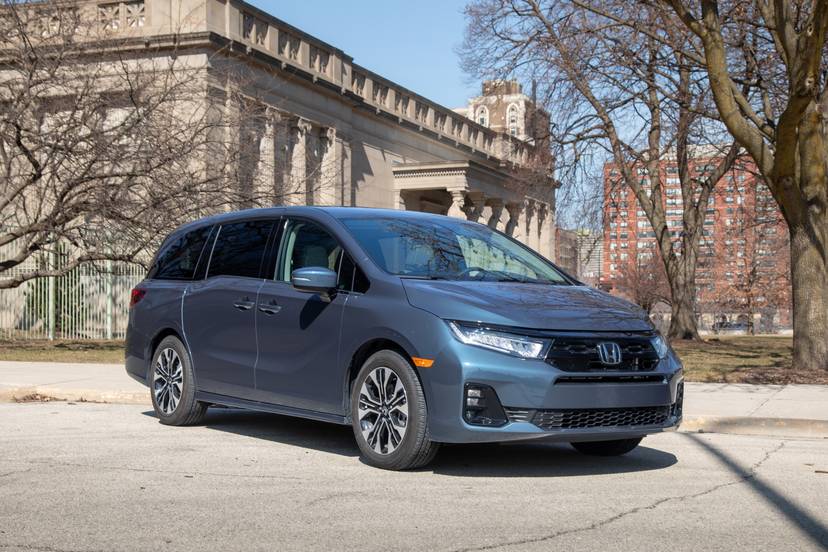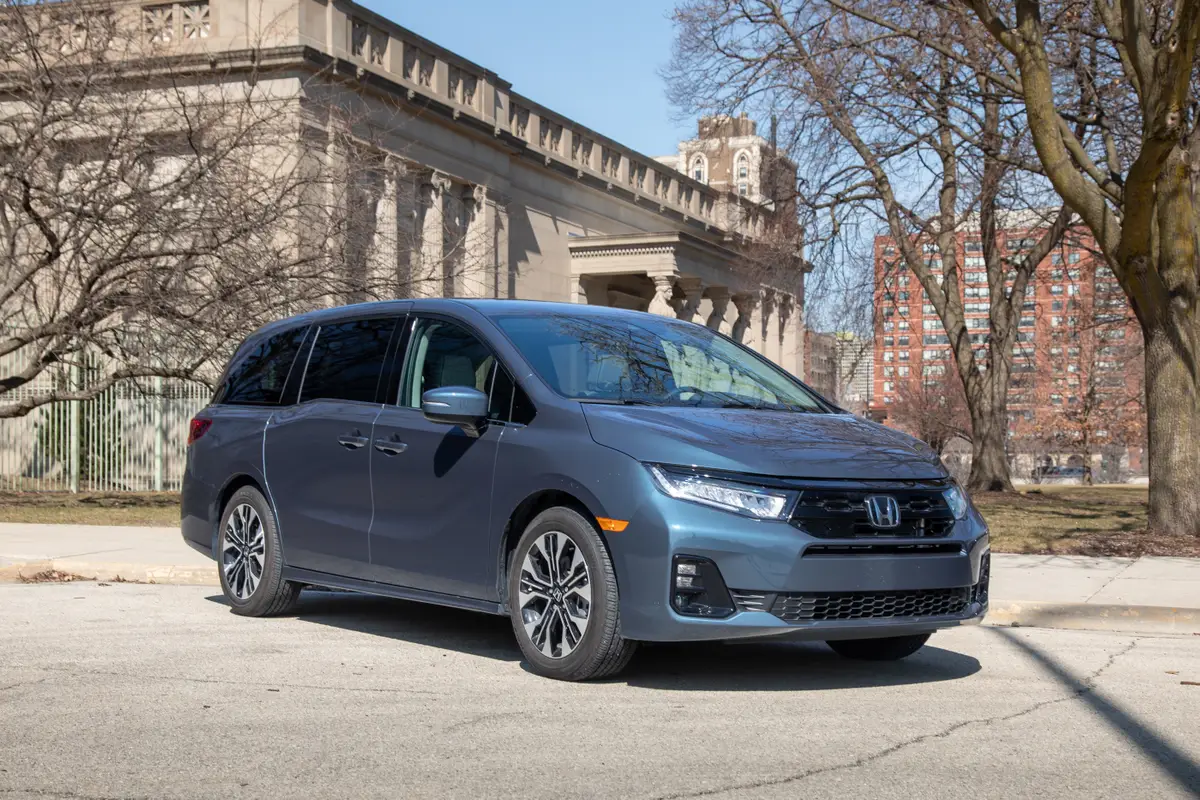
Is the Honda Odyssey a Good Minivan?
- The 2025 Honda Odyssey is a good minivan, with ample seating in all three rows, solid in-cabin storage and tons of usable cargo space. It also has user-friendly technology, though that tech is nowhere near class-leading.
How Does the Honda Odyssey Compare With Other Minivans?
- To different degrees, all minivans excel at hauling people and stuff. The 2025 Honda Odyssey is one of those, with the biggest flaw on its resume being a lack of powertrain options. A gas-only 3.5-liter V-6 engine is the only one offered, and it only comes with front-wheel drive. Aside from the gas-only Chrysler Voyager, all other minivans on the market are available as either a traditional hybrid (Kia Carnival, Toyota Sienna) or a plug-in hybrid (Chrysler Pacifica). Both the Pacifica and the Sienna also offer all-wheel drive.
Related: 2025 Honda Odyssey: Family Hauler Gets Face-Lift, Tech Updates
How Much Does the 2025 Honda Odyssey Cost?
As of this writing, pricing for the 2025 Honda Odyssey is as follows (all prices include destination fee):
- EX-L: $43,670
- Sport-L: $44,820
- Touring: $48,360
- Elite: $52,630
For this review, I tested an Odyssey Elite, which includes all the bells and whistles you can get on an Odyssey. Its equipment list included a rear entertainment system (which comes standard on the Touring and Elite trim levels), heated steering wheel, heated and ventilated front seats, two-tone leather upholstery, a hands-free power liftgate and much more.
Related Video:
We cannot generate a video preview.
Is the 2025 Honda Odyssey Good at Carrying People and Cargo?
Where the Odyssey excels is in its interior space and packaging. Up front, the cockpit is roomy and airy, with a centrally mounted electronic gear selector that frees up center console space for large-item storage. The front seats are comfortable enough for long-distance trips.
In the second row, the standard bench seat — which can fit three car seats — easily converts into captain’s chairs with the middle seat removed, which is when the real magic happens. The remaining captain’s chairs are what Honda calls Magic Slide seats, and they can slide forward, backward and side to side. This results in a number of useful seating configurations. Pushing the two seats together into a buddy seat configuration opens up a wide path to the third row from the sliding door — almost like a passenger van, in which the rearmost seat is the width of the van but the benches ahead of it are shorter to allow access to the wayback. My son’s rear-facing car seat could also still be in the middle second-row seating position, giving an adult easier access to him while driving (and keeping him in probably the safest spot in the van). In the Odyssey, interior quality dips once you get to the third row, but those sitting back there have plenty of space, cupholders, USB-C charge ports and air vents.
On the cargo-hauling front, there’s ample storage space with all three rows of seats in place, but folding the third row down creates a flat floor all the way to the second-row seatbacks, with tons of room for larger items. To accommodate the largest items, those second-row seats can be removed entirely. During my test drive, my family had enough space for three adults, their luggage and a 1-year-old in a car seat — buddy seat configuration plus all of his accoutrements — with tons of cargo room to spare.
How Good Is the 2025 Honda Odyssey’s Interior Technology?
The answer to this question depends on your personal definition of “good technology.” I find Honda’s non-Google-based infotainment system intuitive and easy to use. For 2025, the Odyssey gets an upgrade that increases the system’s screen size to 9 inches and adds a faster processor. The system also includes wireless Apple CarPlay and Android Auto smartphone connectivity. The entire gauge cluster isn’t digital, but a portion of it is, and it’s easy to navigate the menus there and configure the display to show the information you want to see — for example, fuel economy and range during a long road trip.
On the other hand, the Odyssey’s displays look dated. In terms of size and modernity, they’re nowhere near what you’ll find in the Kia Carnival — and the Kia’s touchscreen is easier to use, too. But if all you want in your vehicle is a solid system that works, and you’re not worried about the latest gadgets and gizmos, the Odyssey will suit you just fine. One old-school touch we appreciate is the inclusion of physical climate and audio controls.
Other technology inside the Odyssey is more of a mixed bag. Available CabinWatch and CabinTalk systems feel a bit gimmicky to me. CabinWatch, which is included on higher trims, is an interior camera system that shows front-seat occupants what’s going on in the seats behind them (though if your child is in a rear-facing car seat, all you’ll see is the back of the seat). It’s more useful if you have third-row passengers, but finding the feature in the touchscreen and activating it while driving feels at least as distracting as it would be to simply turn around and look. Best to leave both actions to red lights. Better than viewing passengers while driving is the Odyssey’s standard rear-seat reminder system, which helps owners ensure they haven’t accidentally left anyone behind when leaving the car.
The standard CabinTalk system is an in-car intercom that can interrupt audio on the available built-in entertainment system and amplify your voice through the car. This feels more useful than CabinWatch, but still a little silly — and if your passengers have their own headphones on, you might still have to raise your voice or wave your hands to get their attention.
As for that built-in entertainment system, while it’s nice to have, it is a single-screen system — so hopefully your passengers’ viewing preferences align! — and Honda has dropped the built-in Blu-ray player. Now you must bring your own streaming device and connect it to the system via an HDMI cable. That’s one more thing to pack, stow in the center console and not leave inside the van overnight. At that point, maybe it makes more sense just to mount a personal tablet on the back of the front seat and keep the built-in, overhead screen folded up.
What Safety Systems Does the 2025 Honda Odyssey Have?
Every 2025 Odyssey comes standard with the Honda Sensing suite of active-safety tech, which includes collision mitigation braking with pedestrian detection, forward collision warning, lane-centering steering, road departure mitigation and adaptive cruise control. The systems did their jobs unobtrusively during my drive. When we encountered a snowstorm, the snow piled up over a sensor in the grille that was necessary for the adaptive cruise control system to function. Not only did the Odyssey warn me that adaptive cruise control was no longer available, the gauge cluster displayed an image to let me know which sensor to clean off.
The 2025 Odyssey is an Insurance Institute for Highway Safety 2024 Top Safety Pick and has a five-star overall rating from the National Highway Traffic Safety Administration.
How Does the 2025 Honda Odyssey Drive?
Driving dynamics are probably not top of mind for most minivan shoppers — which is why this section falls toward the end of this review — but for those who do want to enjoy the ride in their minivan, here it is: The Odyssey, regardless of trim, is powered by a 280-horsepower, 3.5-liter V-6 engine that’s paired with a 10-speed automatic transmission and FWD. The combination works fine, with ample power for highway driving and enough extra for merging and passing maneuvers, though the transmission does behave lethargically at higher speeds and is reluctant to downshift. Its suspension is firmly tuned (typical of a Honda), and the steering is numb and heavily boosted, resulting in a fairly busy, harsh ride; there’s a feeling of constantly sawing at the steering wheel. None of this is a deal breaker for me, but it’s disappointing that Honda — which produces some of the more fun-to-drive vehicles in the segments in which it competes — couldn’t reproduce some of that magic here.
Also disappointing is a lack of powertrain choices. The Odyssey isn’t the only single-powertrain minivan on the market; the Toyota Sienna is hybrid-only, but with that model, you can at least choose front- or all-wheel drive. Kia offers gas-only and hybrid versions of its Carnival minivan, and the Chrysler Pacifica has the most variety, offering FWD, AWD and a plug-in hybrid version in addition to its base gas-only V-6.
The Odyssey’s estimated fuel economy is in line with its gas-only competitors, but it significantly trails its hybrid and plug-in hybrid competition:
Gas-Only 2025 Minivans
- Honda Odyssey: 19/28/22 mpg city/highway/combined
- Chrysler Voyager: 19/28/22 mpg
- Chrysler Pacifica (FWD): 19/28/22 mpg
- Kia Carnival: 18/26/21 mpg
- Chrysler Pacifica (AWD): 17/25/20 mpg
Hybrid and Plug-In Hybrid 2025 Minivans
- Chrysler Pacifica PHEV: 82 mpg-equivalent combined during 32-mile electric-only range, 30 mpg when battery is depleted
- Toyota Sienna (FWD): 36/36/36 mpg
- Toyota Sienna (AWD): 34/36/35 mpg
- Kia Carnival Hybrid: 34/31/33 mpg
Is the 2025 Honda Odyssey Similar to the Acura NSX?
No. While the Odyssey does have a 3.5-liter V-6 engine like the second-generation NSX, and it now wears that vehicle’s upright rear bumper reflectors, that’s where the similarities end. (I find that pretty funny, though.)
More From Cars.com:
- Do You Need an All-Wheel-Drive Minivan?
- Which Cars Fit 3 Car Seats?
- These 71 Cars Earned IIHS Top Safety Pick Awards Amid Tougher Criteria
- Research the 2025 Honda Odyssey
- Find a New 2025 Honda Odyssey for Sale Near You
Should You Buy a 2025 Honda Odyssey?
If you’re looking for a competent hauler of both people and things, a minivan is tough to beat, and the Odyssey excels in both those areas. Its fuel economy isn’t exceptional, but while its tech is not the most advanced, it remains easy to use. Minivan shoppers have a very short list of models left to consider given the dwindling size of the class, and I see no reason to take the Honda Odyssey out of consideration.
Cars.com’s Editorial department is your source for automotive news and reviews. In line with Cars.com’s long-standing ethics policy, editors and reviewers don’t accept gifts or free trips from automakers. The Editorial department is independent of Cars.com’s advertising, sales and sponsored content departments.































